Trees - May 10, 2020
|
|
I walked around the perimeter of Essex Skypark this last weekend to see for myself what the ATV riders had done. As you recall, the ESA had trees planted a little over two years ago as part of the tree removal project at the north end of the Skypark. I believe ESA paid $169,000 for this but received $140,000 in reimbursement for a total of $29,000 out of hide. Moreover, ESA had to put $50,000 in reserve for tree mitigation. I don't know when the tree mitigation period is over and by what criteria that money would be released. I believe 925 trees were planted.
This was the first time I ever looked at the two year old trees. I was stunned by how many of them were dead by natural causes. I came away from this walk with three impressions:
1) Because of the significant percentage of dead trees -- I estimate 40% -- the reimbursement of our $50,000 tree bond or a portion of it may be in jeopardy.
2) The impact of vandalism on the trees is miniscule compared to that of natural causes.
3) The trees do not appear to have been maintained at all: live trees and supports are bent over, tubes with dead trees are laying on the ground.
I created this map as a reference for my walkaround. I divided the areas of Essex Skypark into five areas: A) the parking lot, FBO building, hangars and Diffendall Road, B) the north end, C) the east side, D) the grassy Cul-de-Sac area and E) the south end. Paths (or trails) are colored in yellow and numbered P1 to P7. The Tree areas are colored in green and numbered T1 to T4. Swampy areas are colored in blue. The primary ATV entry/egress points are indicated by the red arrows.
|
| |
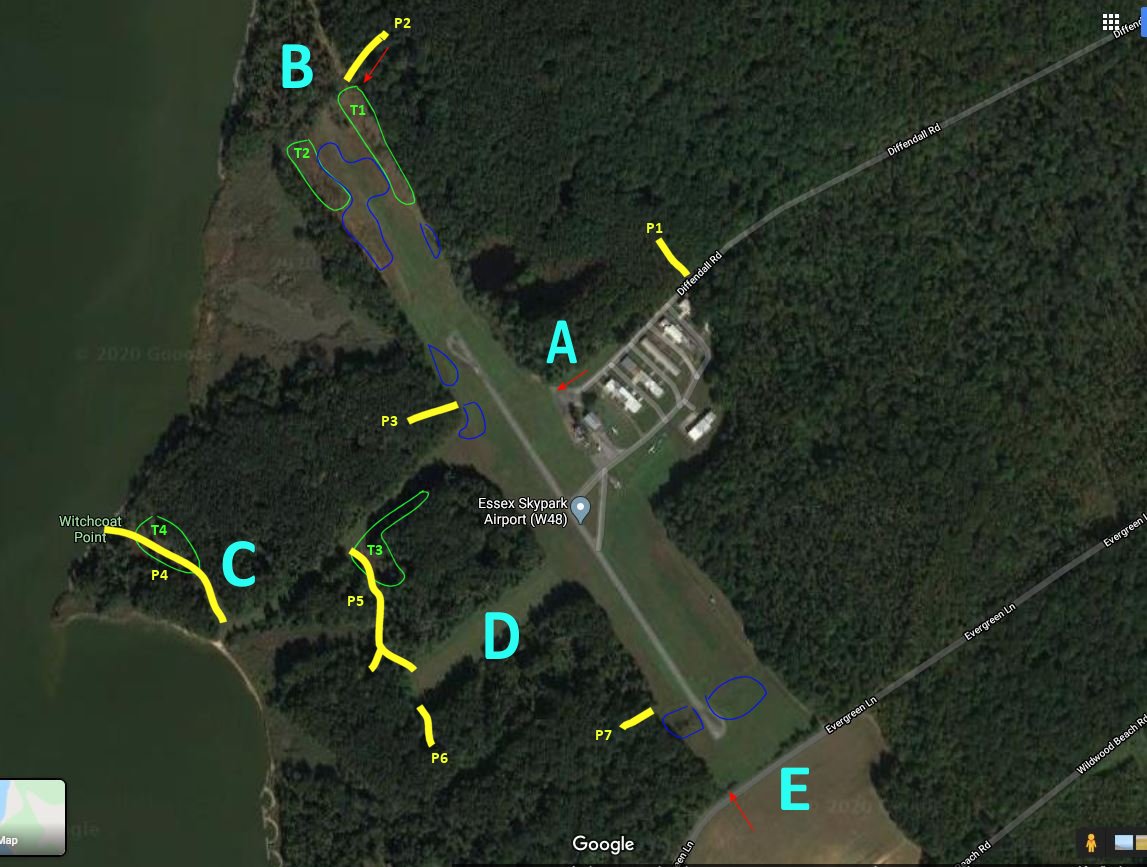 |
|
| I started at the parking lot and walked the perimeter in a counter-clockwise direction. I first came to Tree Area T1. Initially the trees didn't look too bad. One or two were flourishing. Most were alive but didn't have much to show for two years of growth. |
| |
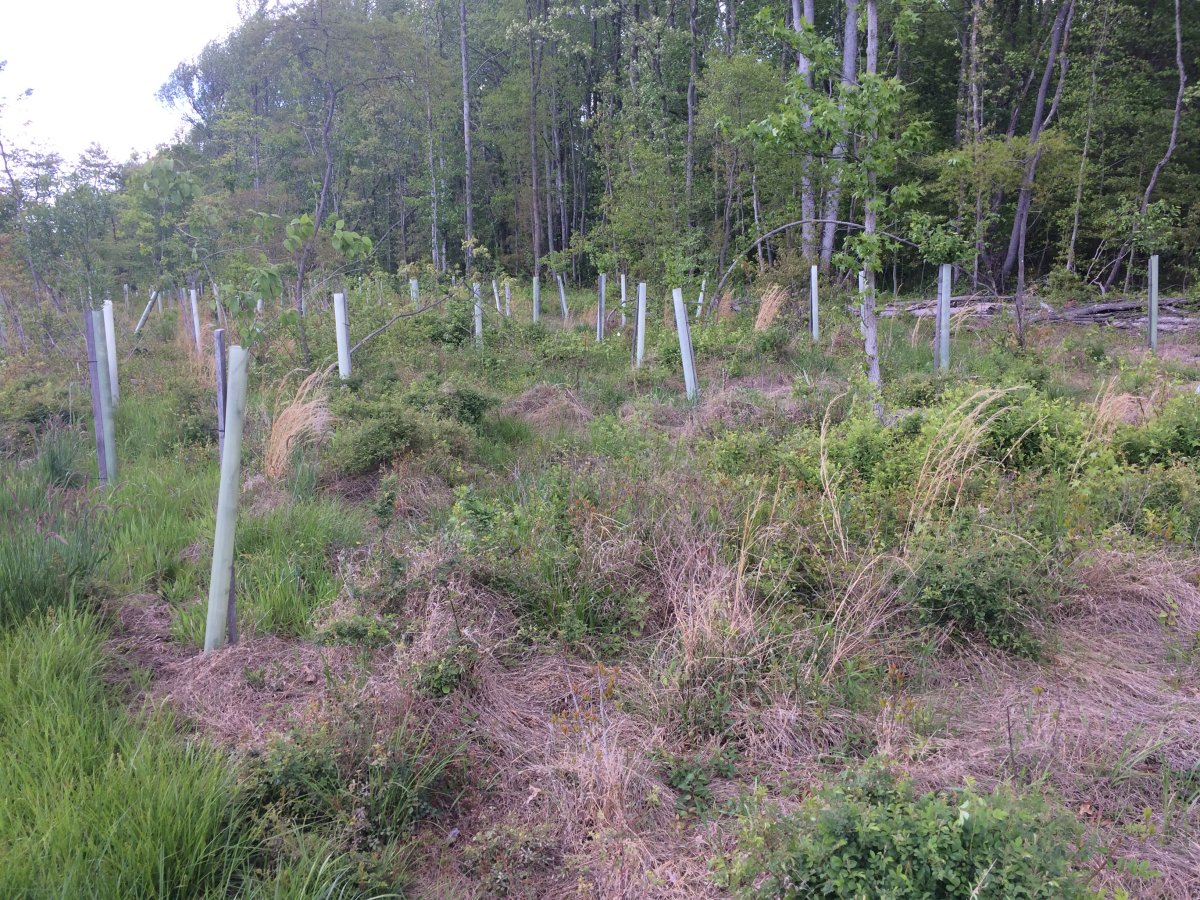 |
|
|
Notice how a couple of live trees are bent over. They should be re-staked to an upright position.
Maybe someone could be hired to look after the trees. Or maybe a volunteer would be willing to look after the trees if the request was made.
|
| |
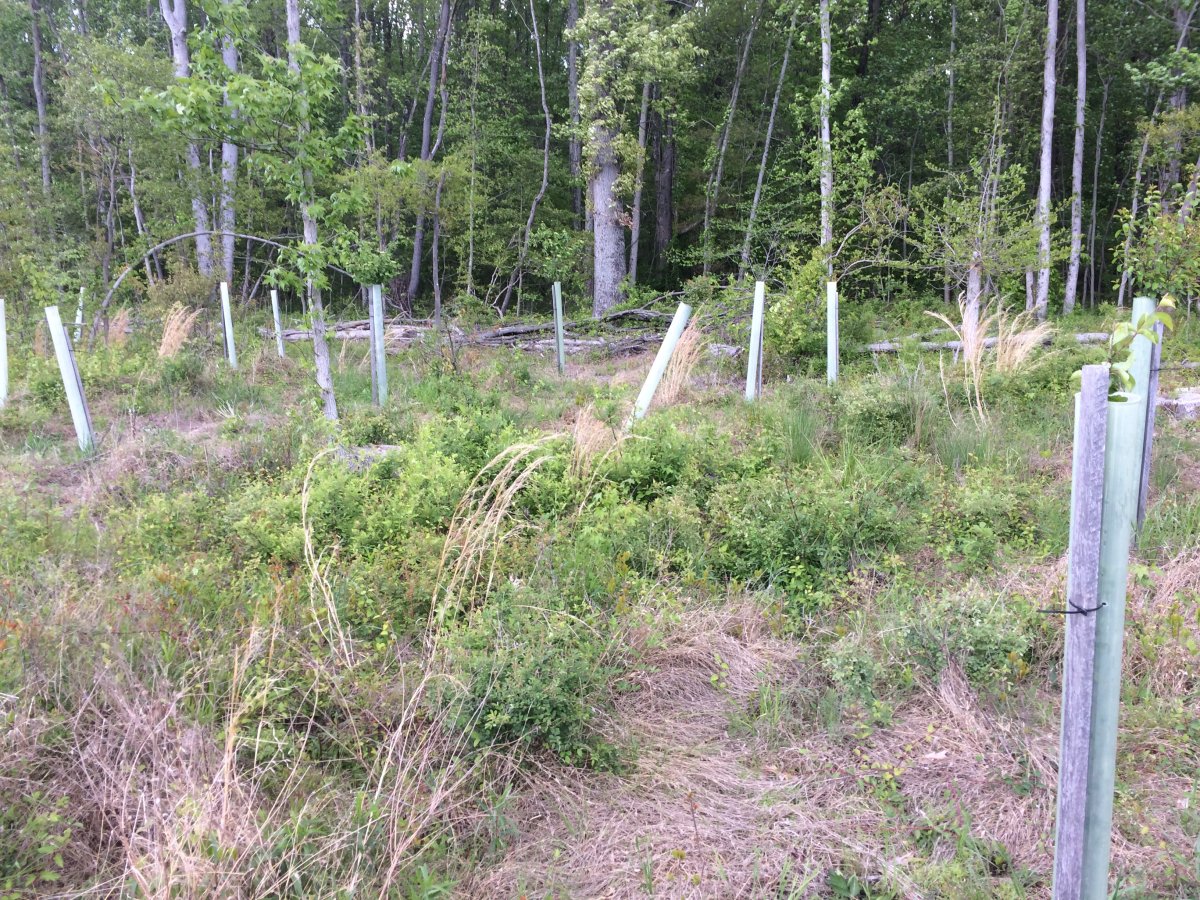 |
|
| A good example of a barely-alive tree that badly needs some tender loving care. |
| |
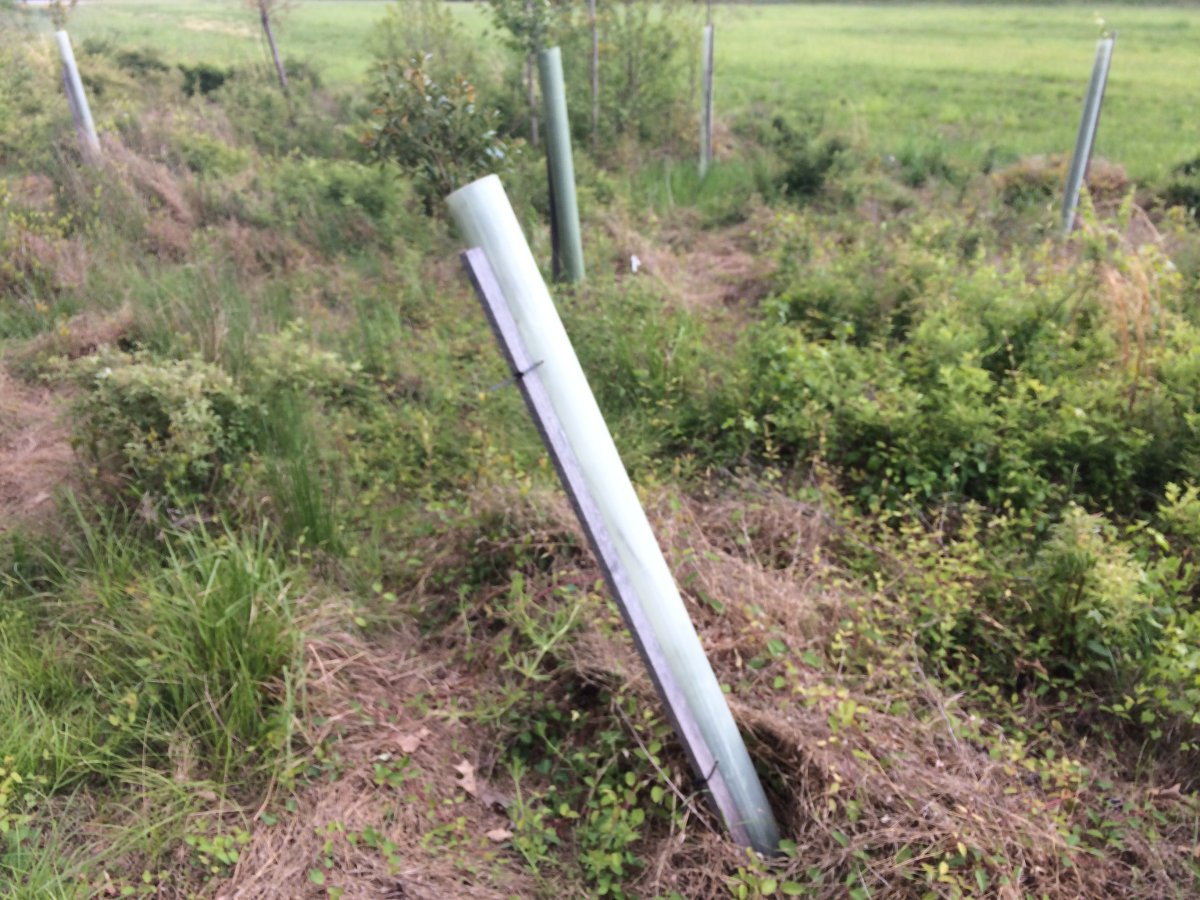 |
|
|
Some more live trees bent over. But so far, the majority of the trees in this shot are alive and looking OK.
|
| |
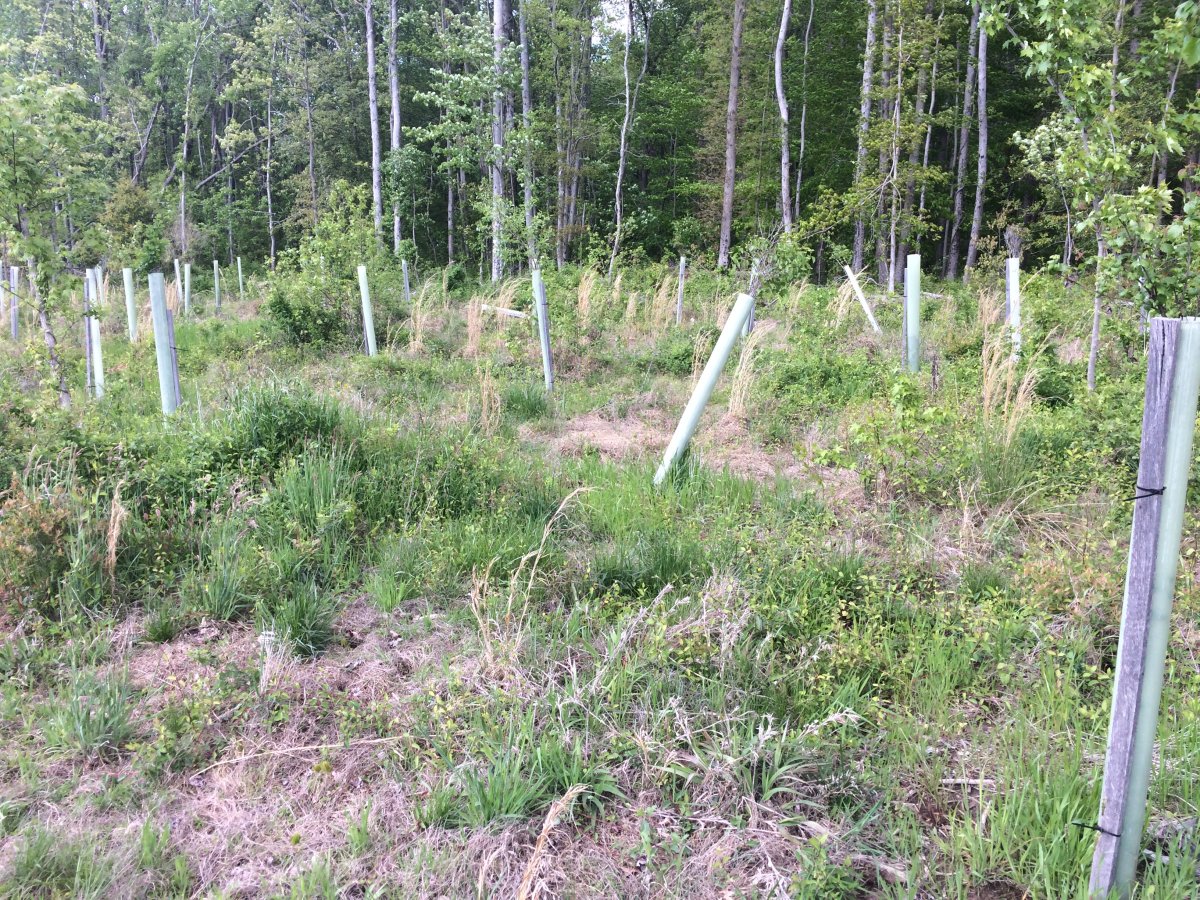 |
|
| The tree at center is flourishing and looking good. But two others are dead and laying on the ground. Was it vandalism, or was the support stake just rotted and without the assistance of a live tree it just toppled in the wind? I think the latter. |
| |
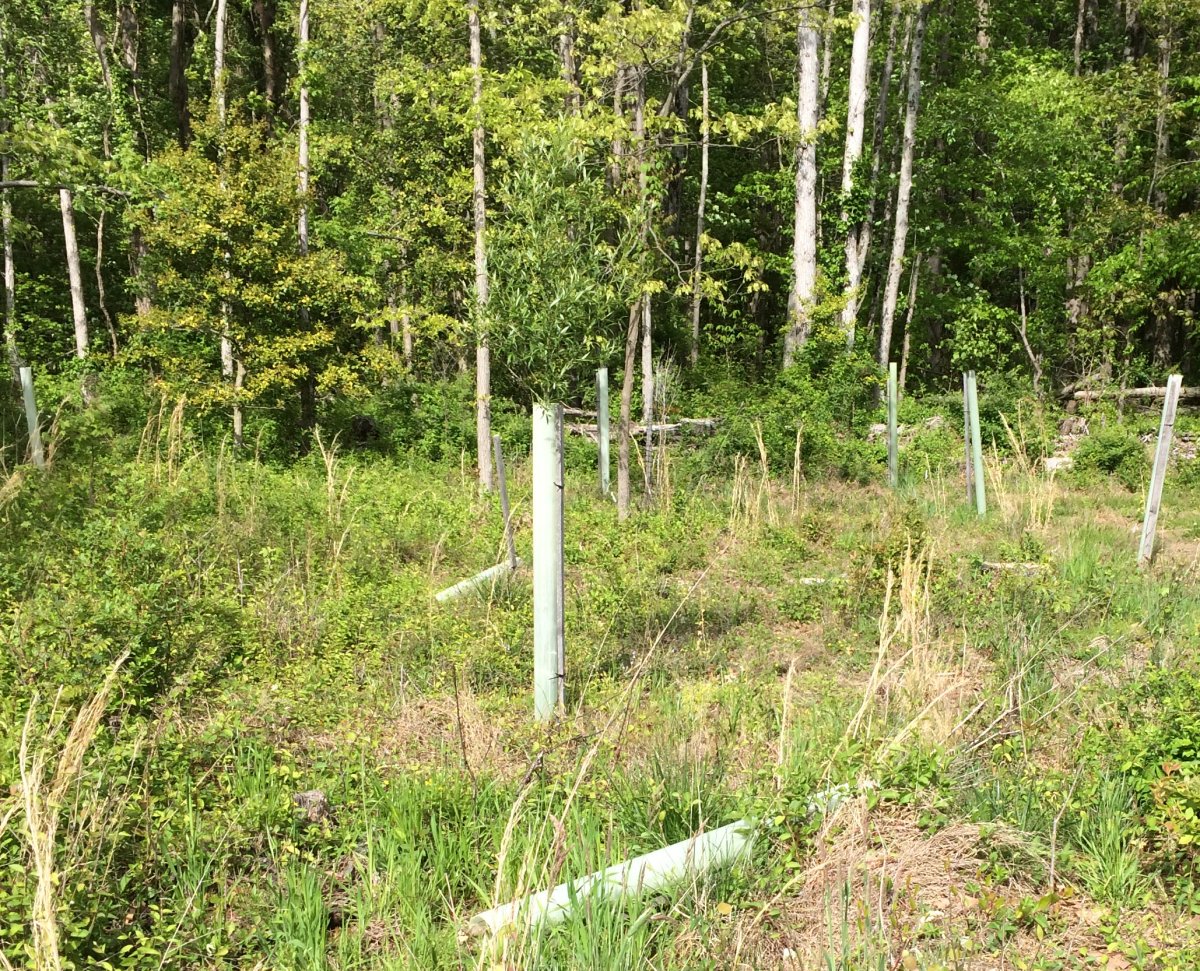 |
|
| Close up of a dead tree topped over. |
| |
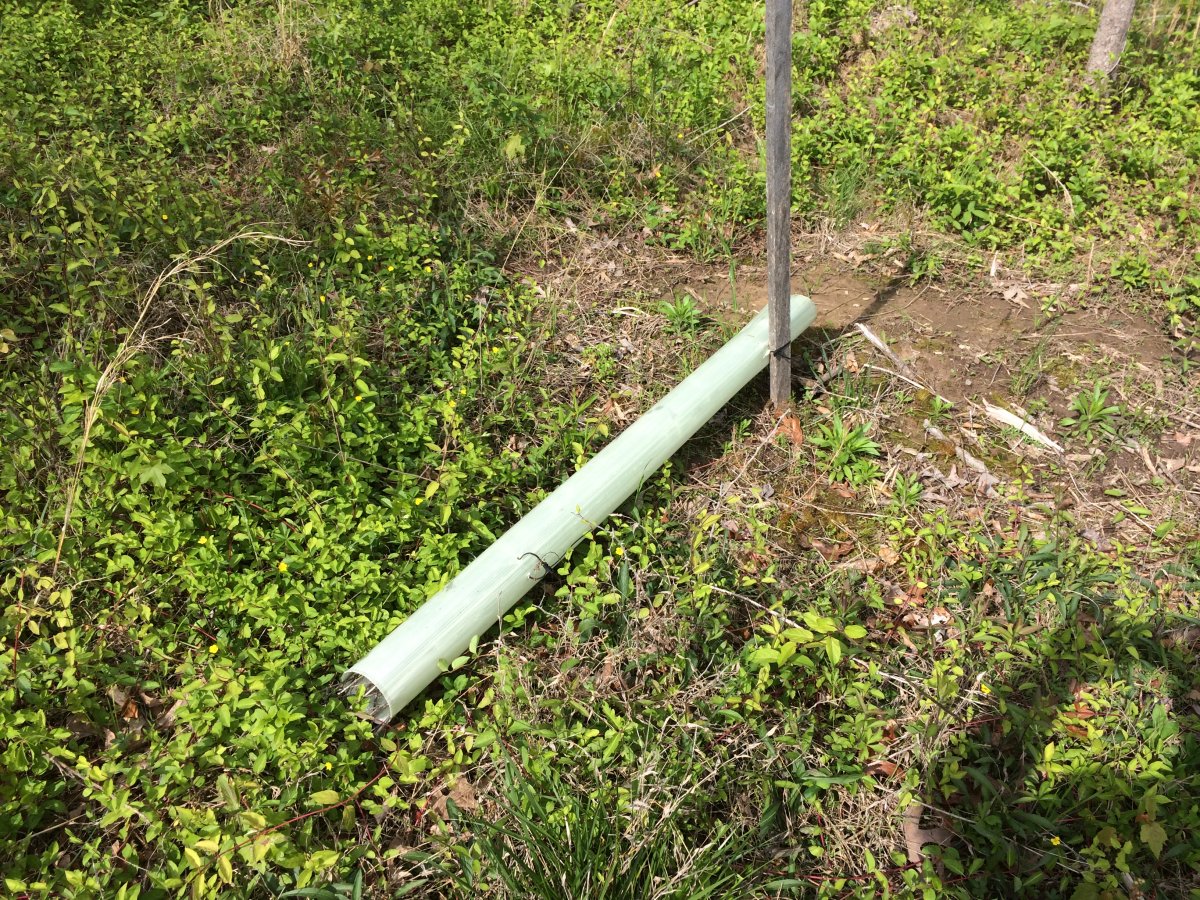 |
|
| Looking inside the tube. |
| |
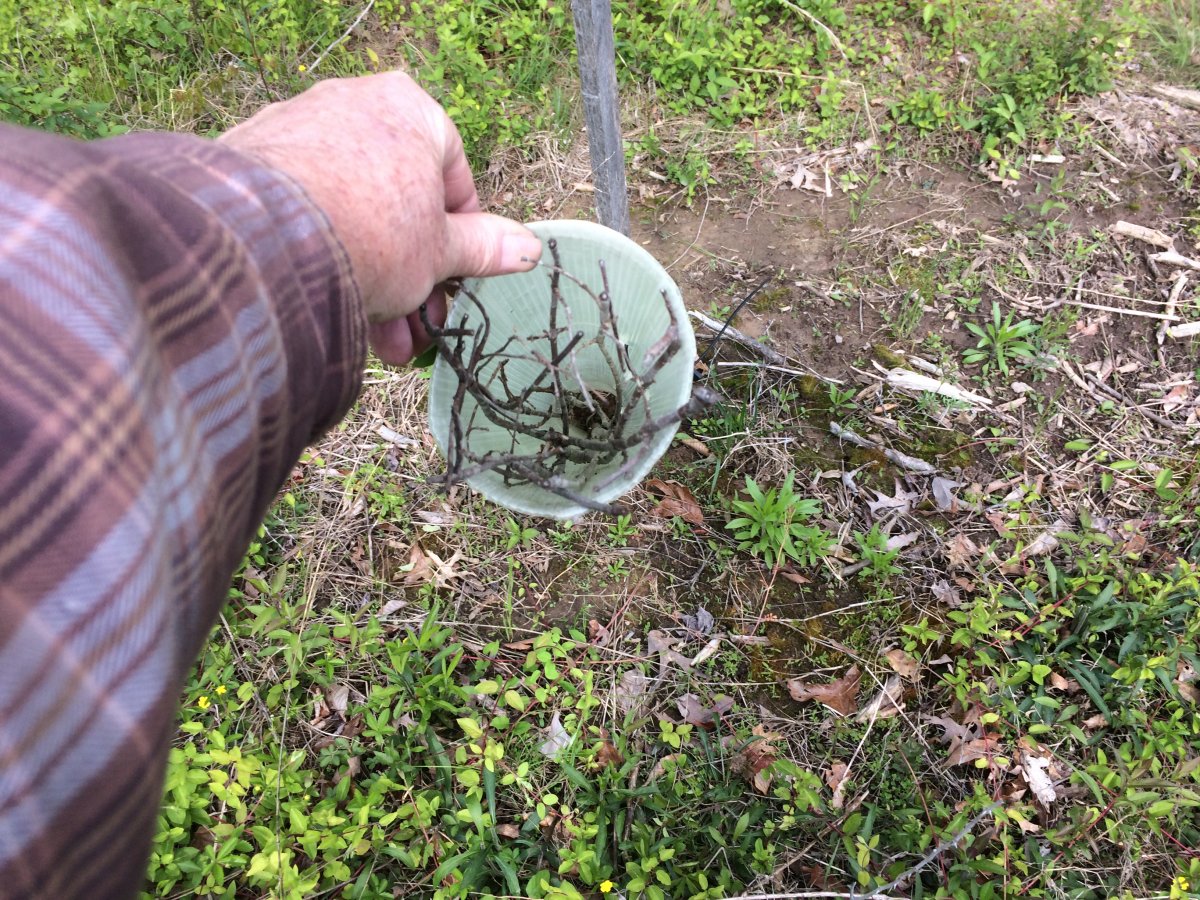 |
|
|
A close-up of an empty tube with no tree.
|
| |
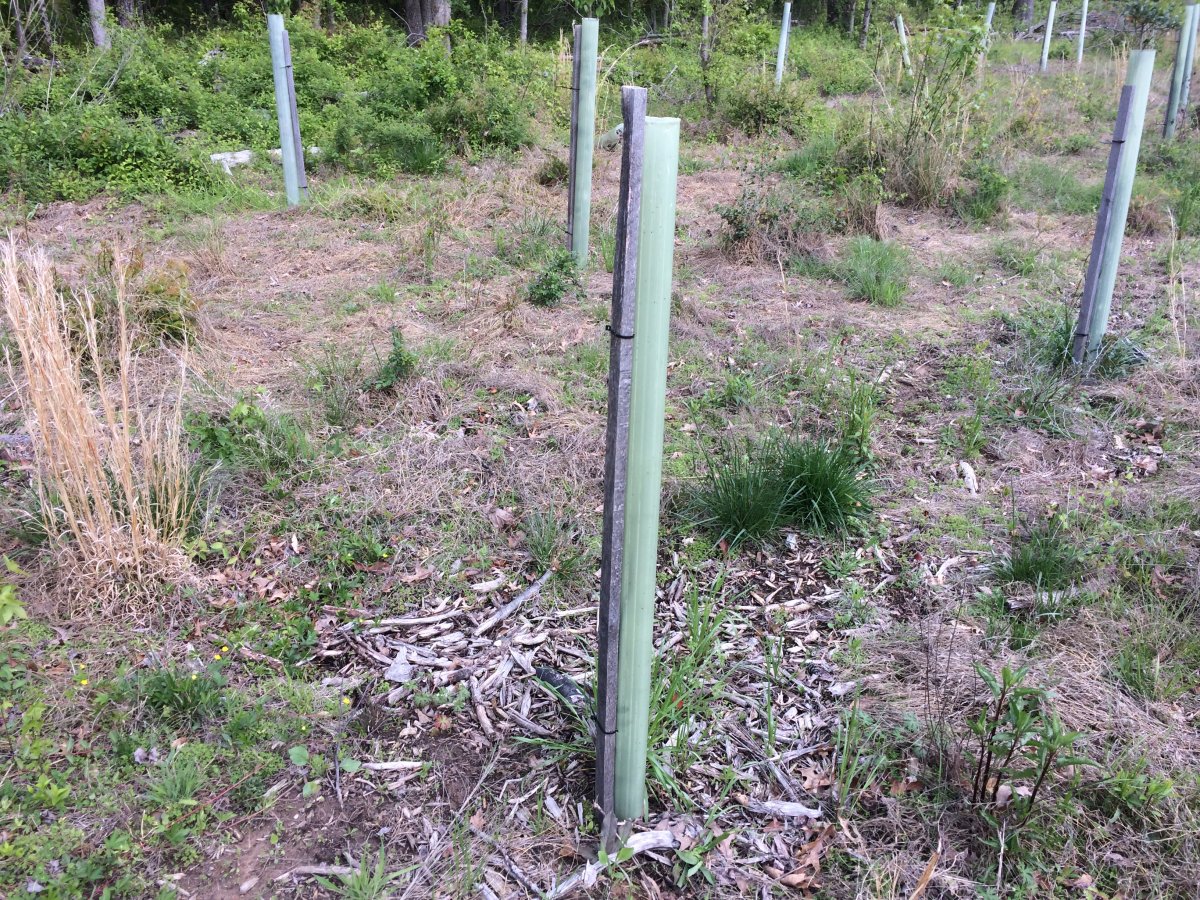 |
|
| I started seeing more dead trees. In this picture three of the four trees are dead. |
| |
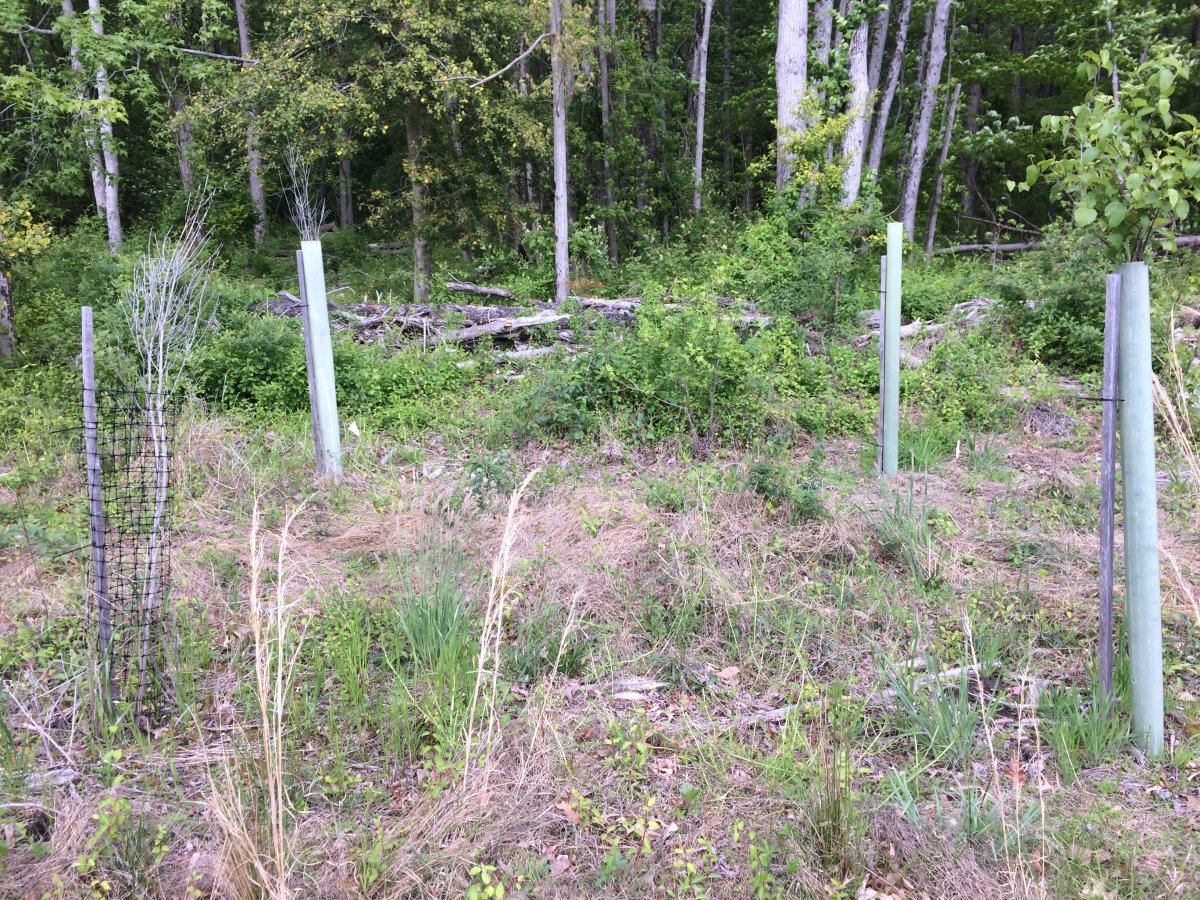 |
|
|
I'm at the northern end of tree area T1. I was stunned at how many of the trees were dead here. In this picture I can only see two live trees.
|
| |
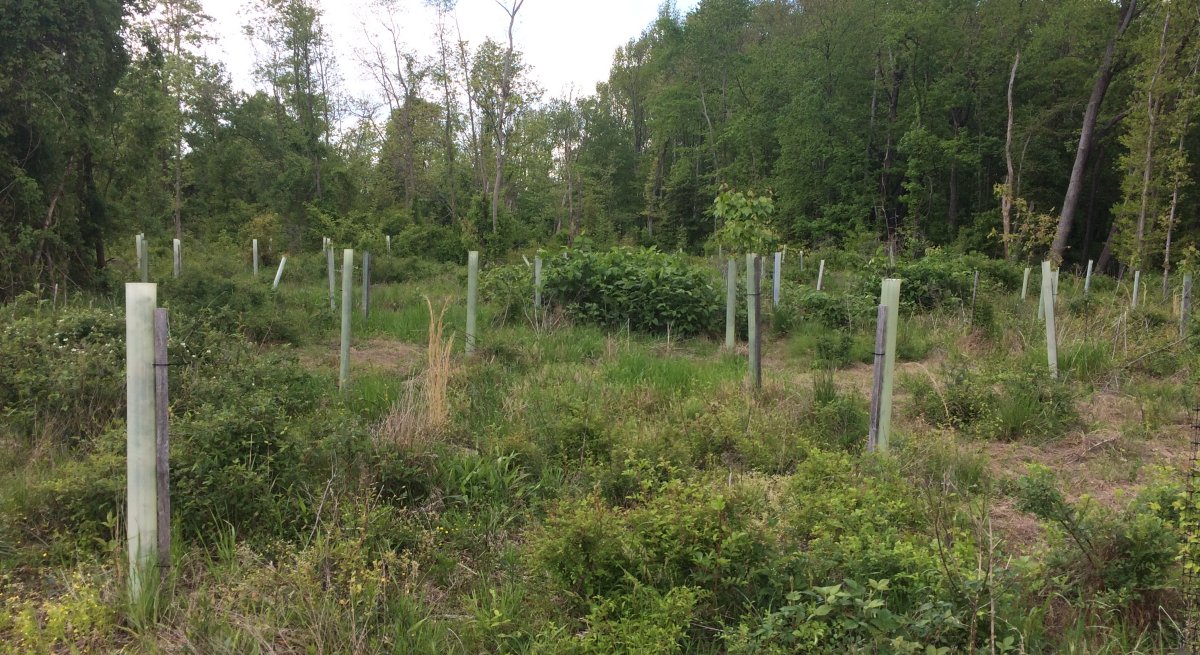 |
|
| This tree is doing OK but not great. I developed my own system of tree classification. On a scale of one to four, I'd give this one a three. One is dead, two is alive but just barely, three is something like this, and four is big and flourishing. |
| |
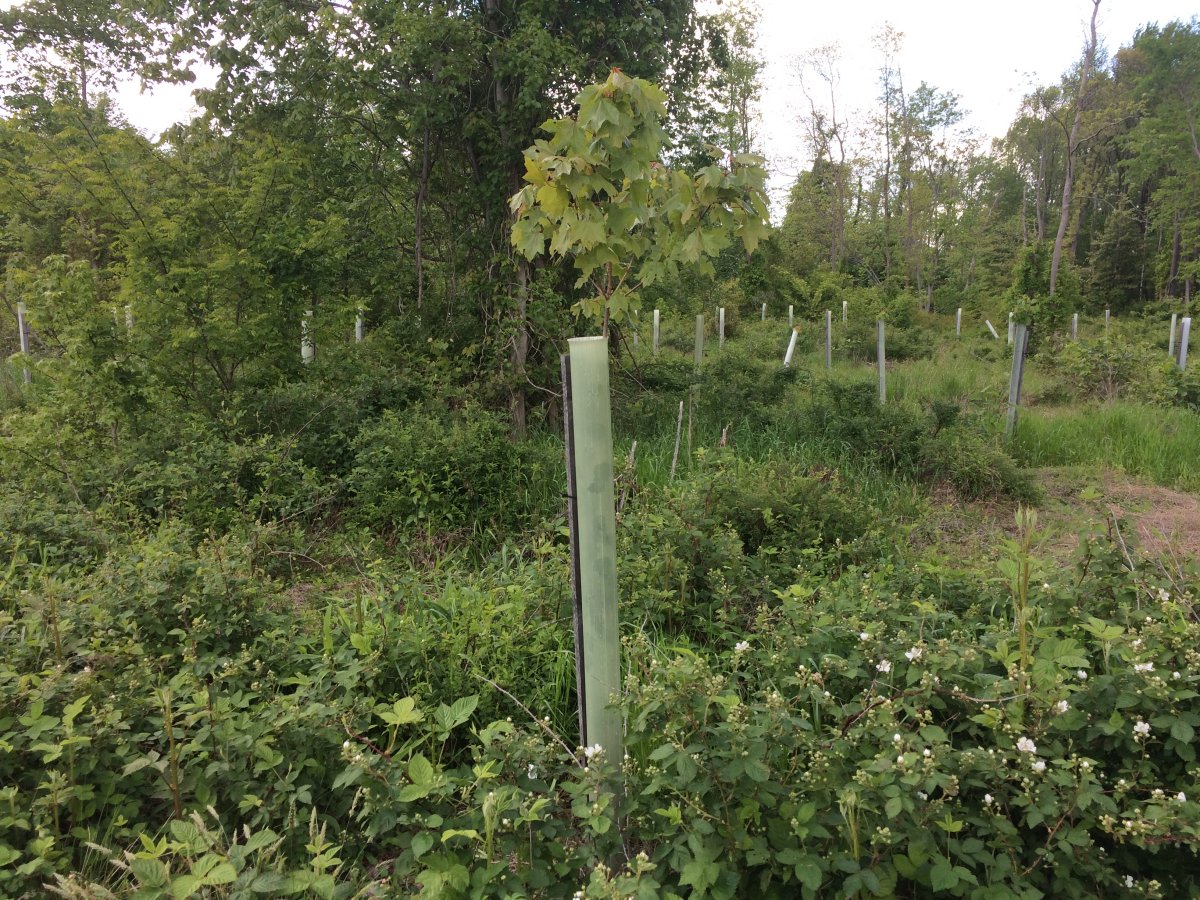 |
|
| Almost every tree in this picture dead dead of natural causes. |
| |
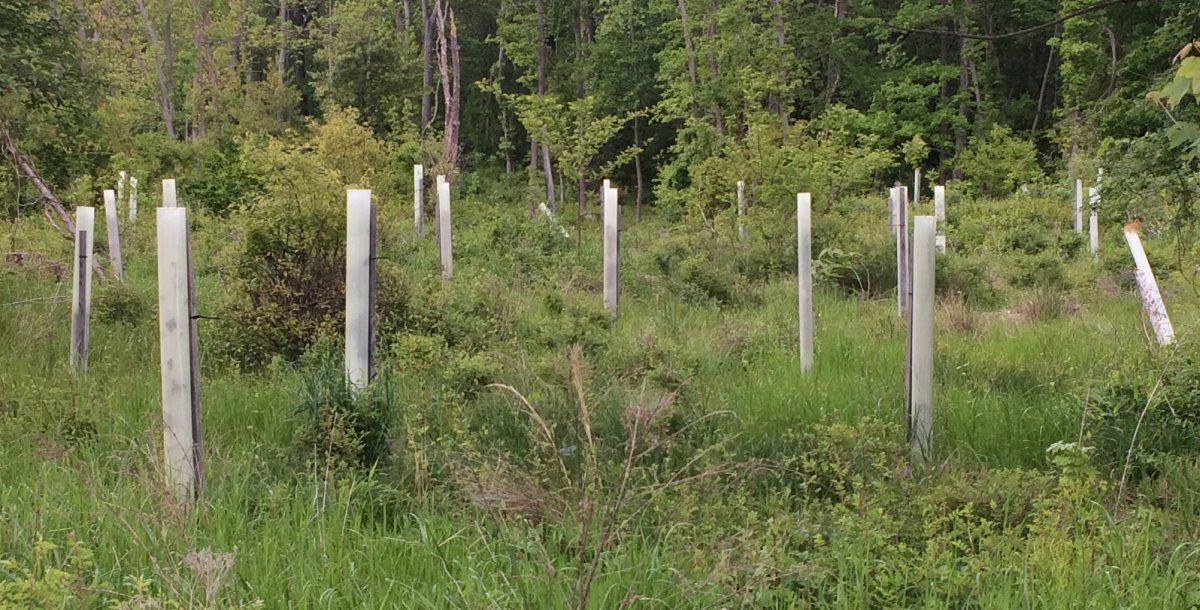 |
|
|
A good example of a just-barely alive tree on the left.
Notice the four tubes laying on the ground. My guess is that the trees were dead, and because this area is right next to a main ATV thoroughfare (P1), the tubes were knocked over. But was it done recently? Months ago? Over a year ago? Who knows? Has anyone been monitoring the tree status?
|
| |
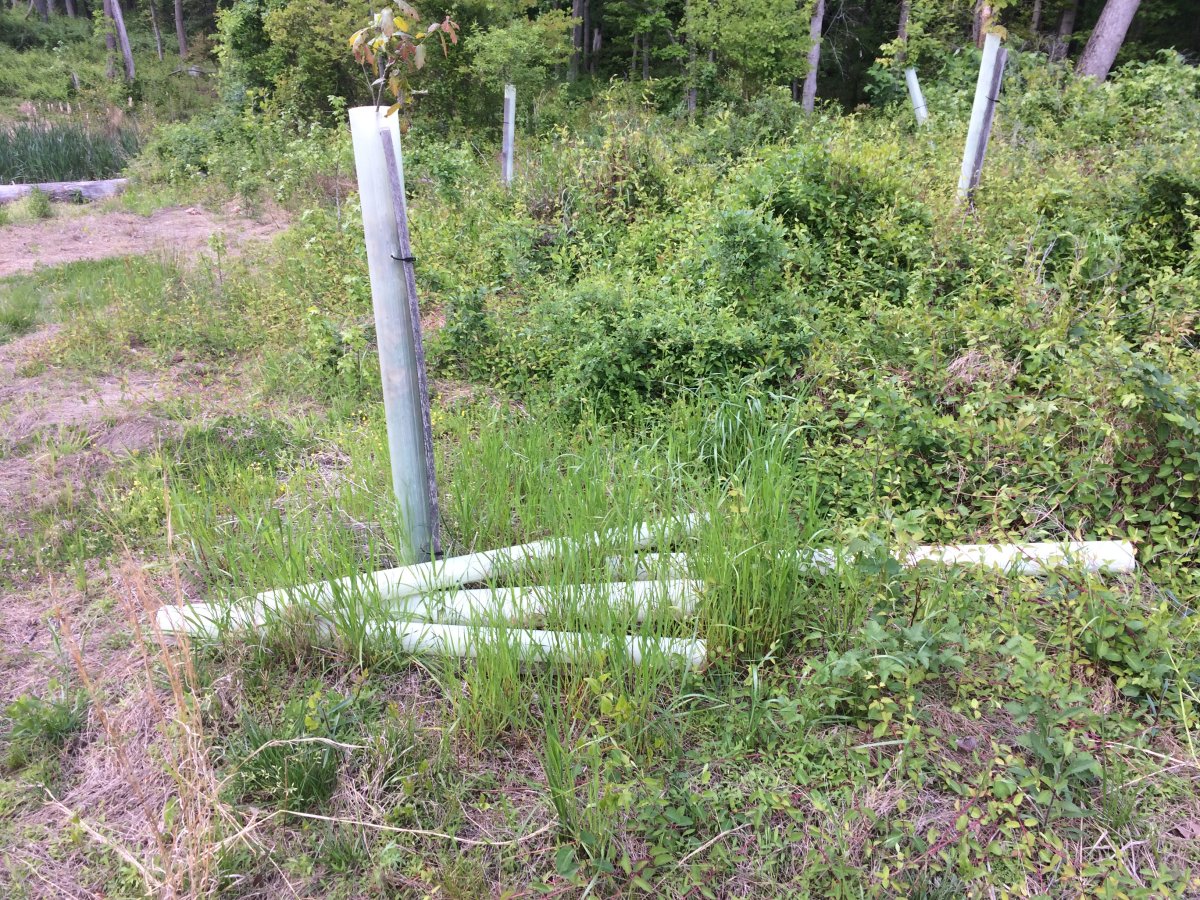 |
|
| Dead tree in tube. |
| |
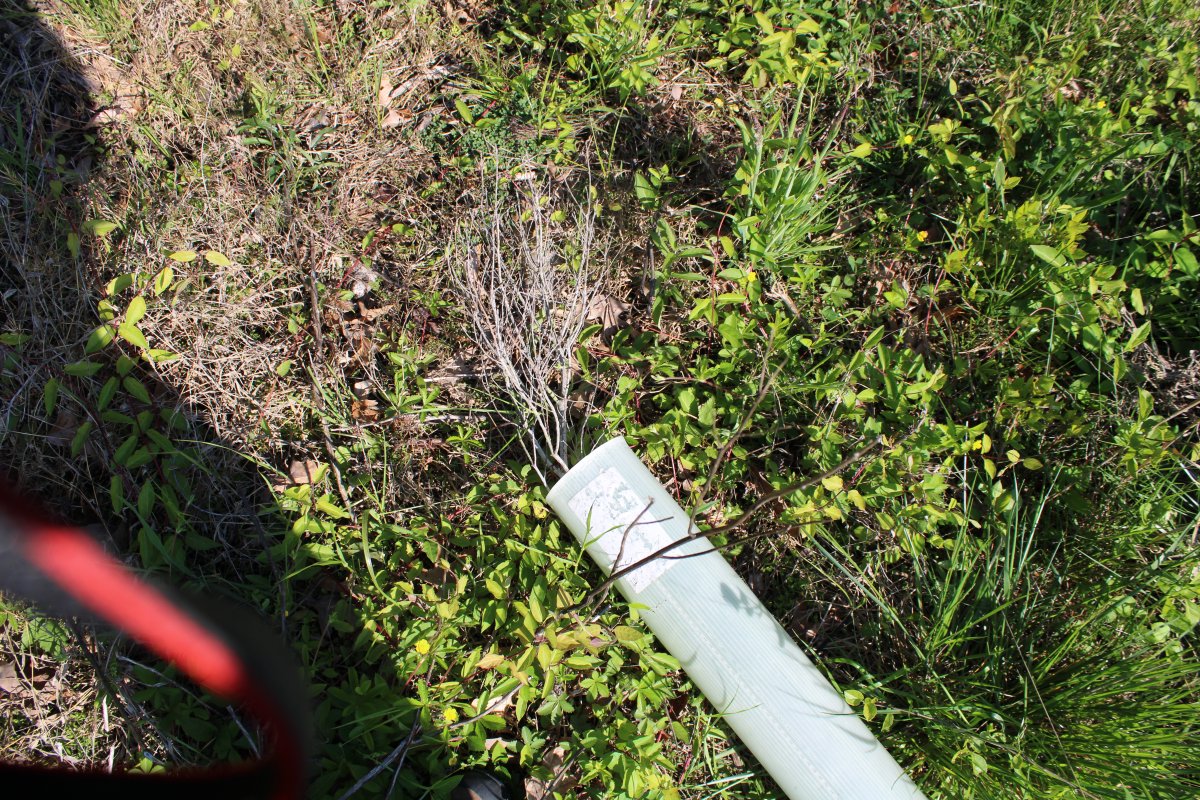 |
|
|
Looking south at mostly empty tubes.
I estimate 25% of the trees in area T1 are dead.
|
| |
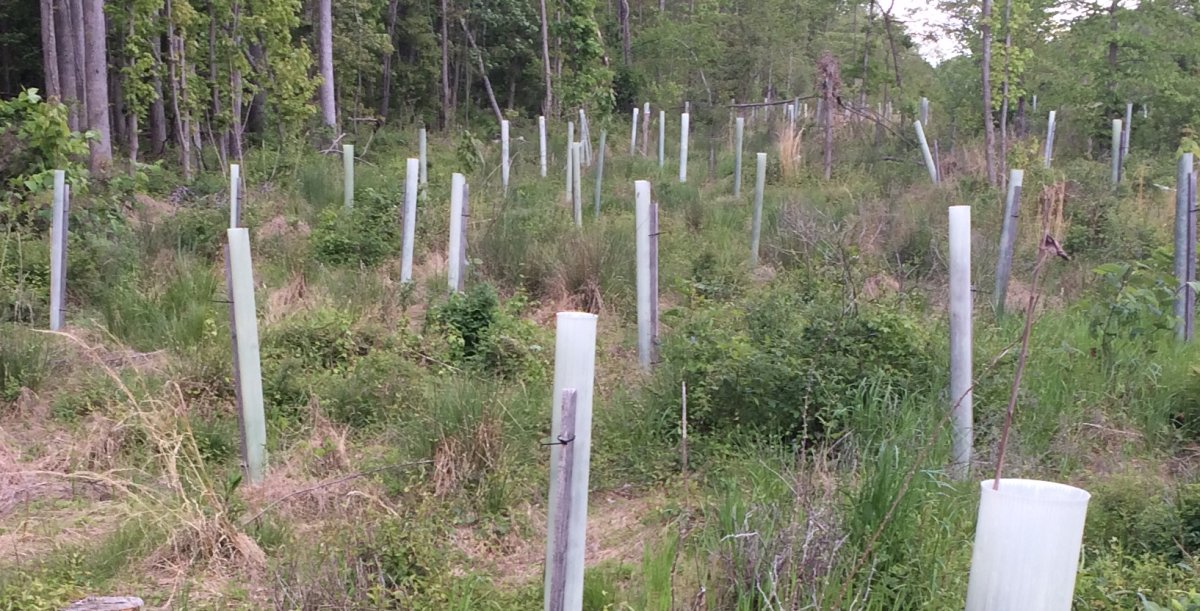 |
|
|
Now I have moved to the other side in area T2. I'm walking north to south. Most of these trees are dead.
|
| |
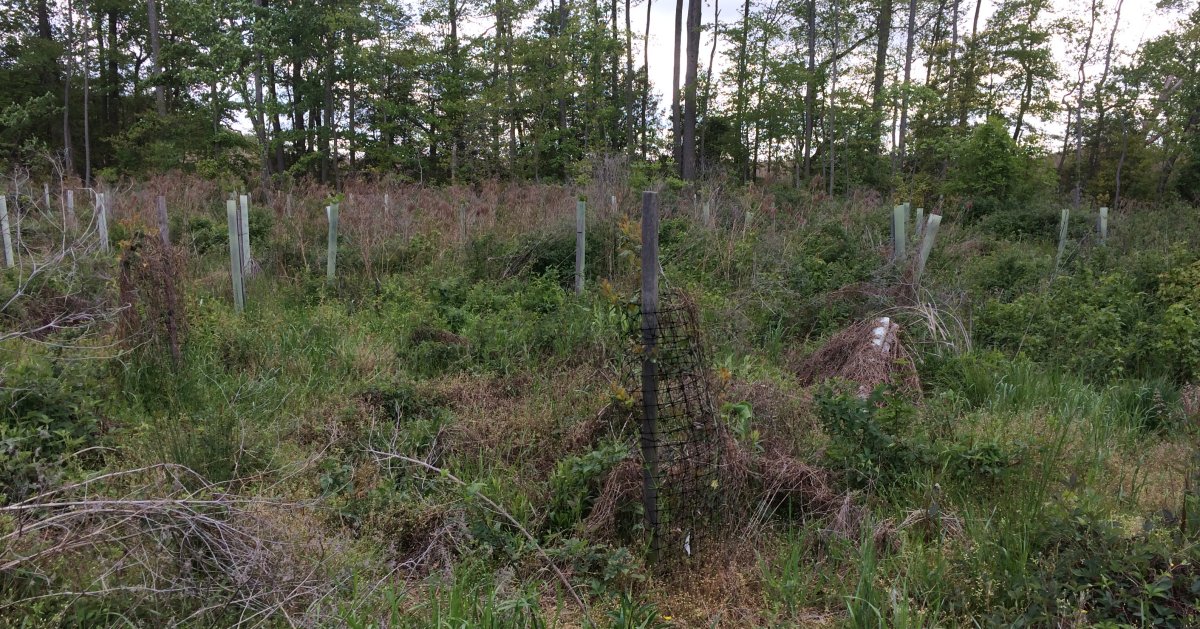 |
|
| It's hard to see but the tree in the middle is doing great! The tree has grown almost to the top of the picture. Another one to its right is doing pretty well. |
| |
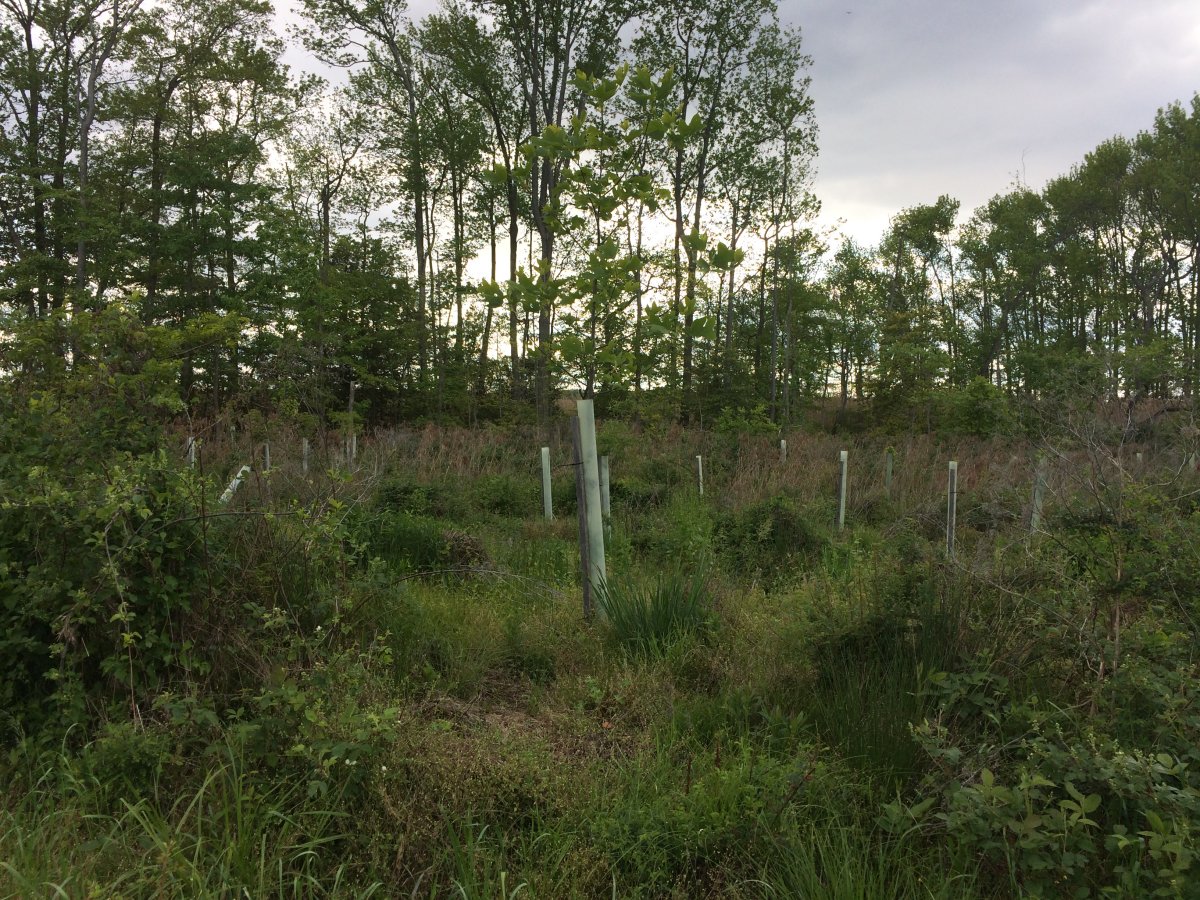 |
|
| This area in T2 is doing great! All of the trees in this picture are flourishing. |
| |
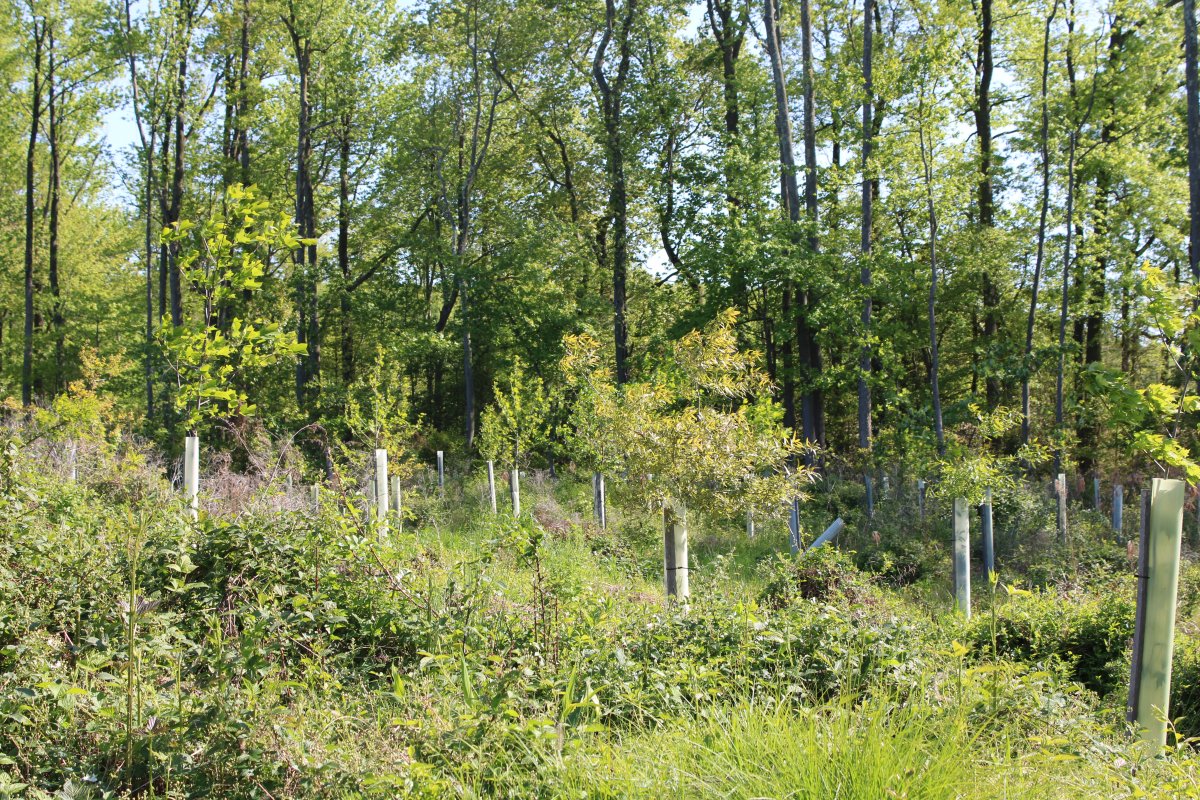 |
|
|
On tree doing OK, most of the rest are dead.
|
| |
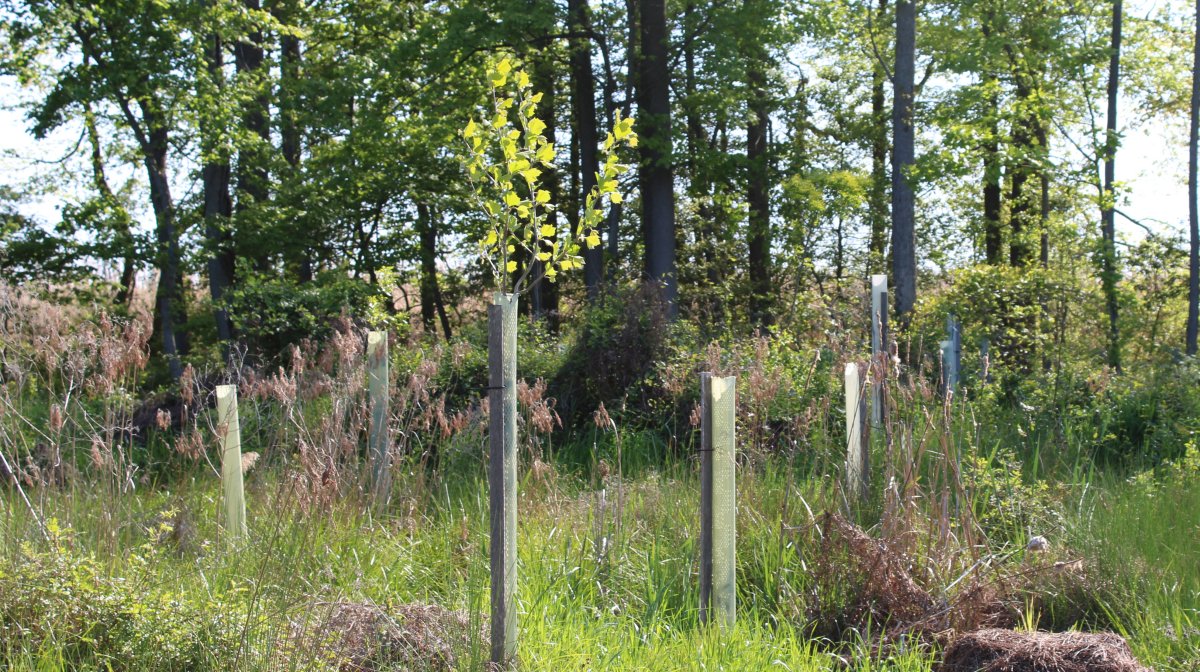 |
|
|
A few trees are doing OK, one barely alive to the right, and the rest dead.
I estimate 20% of the trees in area T2 were dead.
|
| |
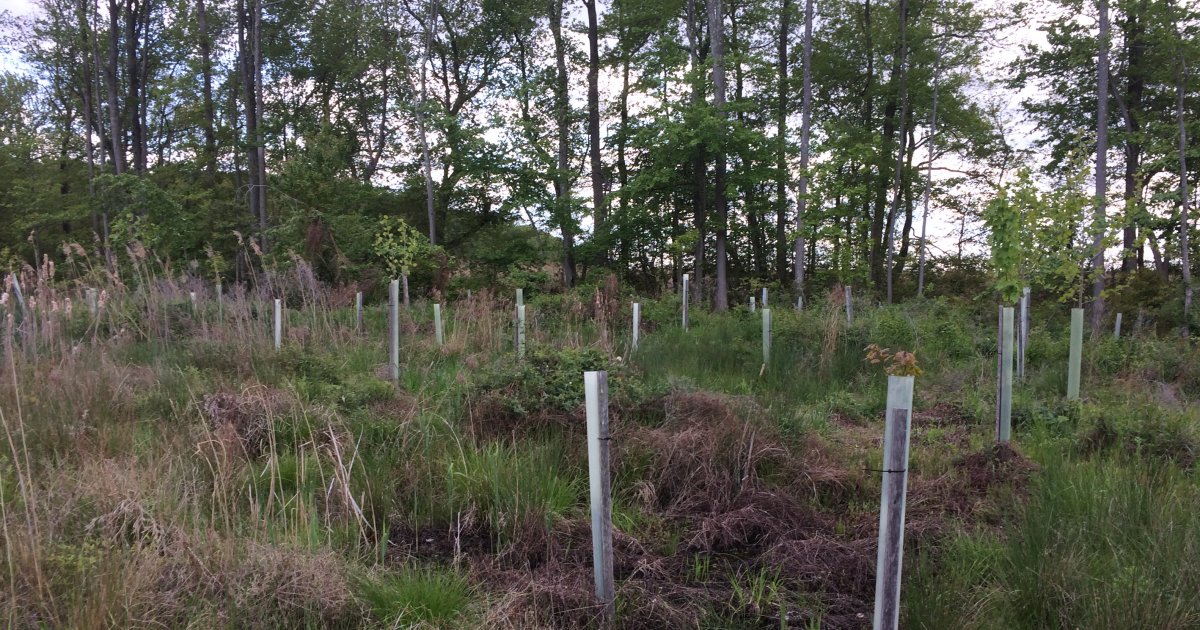 |
|
|
I have left tree area T2 and now entering tree area T3, heading towards the Back River.
The trees along this row are all dead.
|
| |
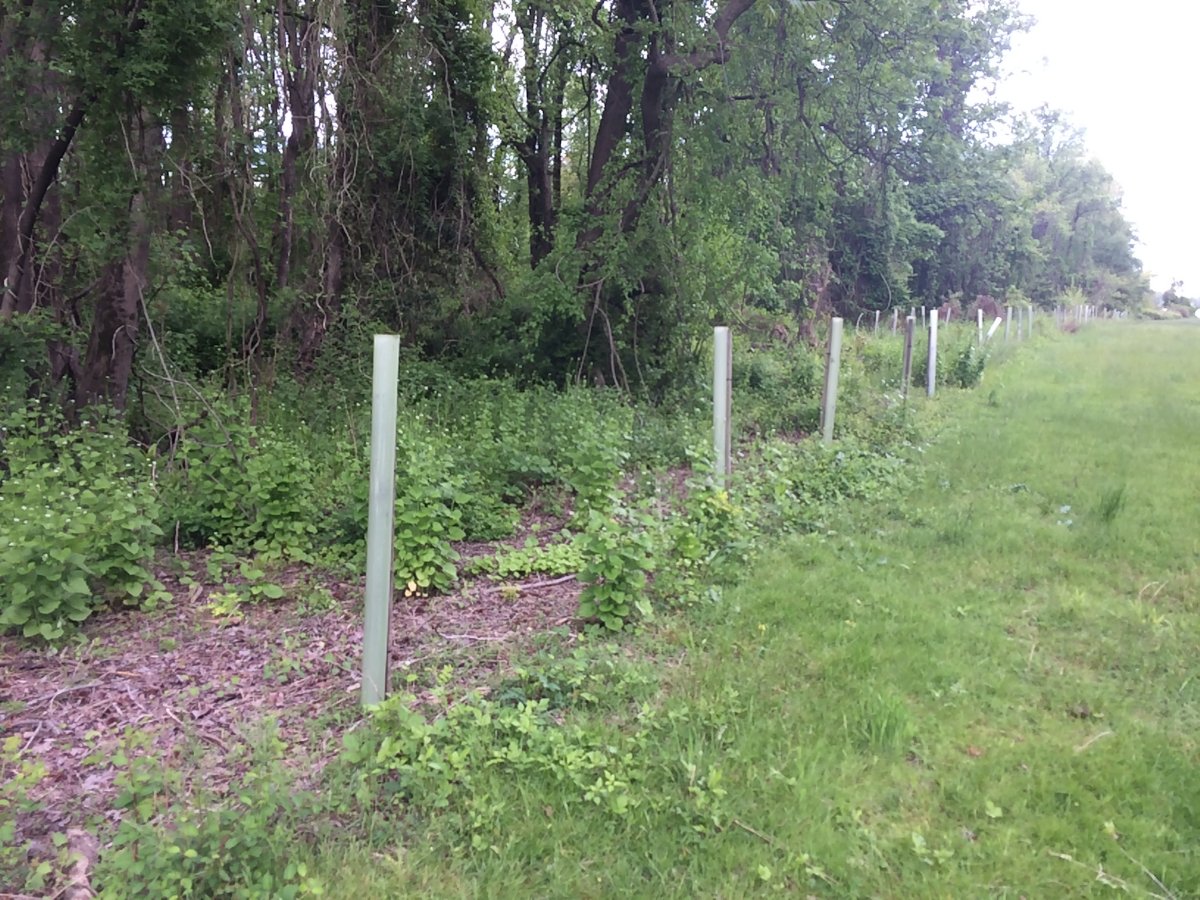 |
|
|
Still along the treeline, none of the trees have survived. Maybe this shaded area is not good for tree-growing?
|
| |
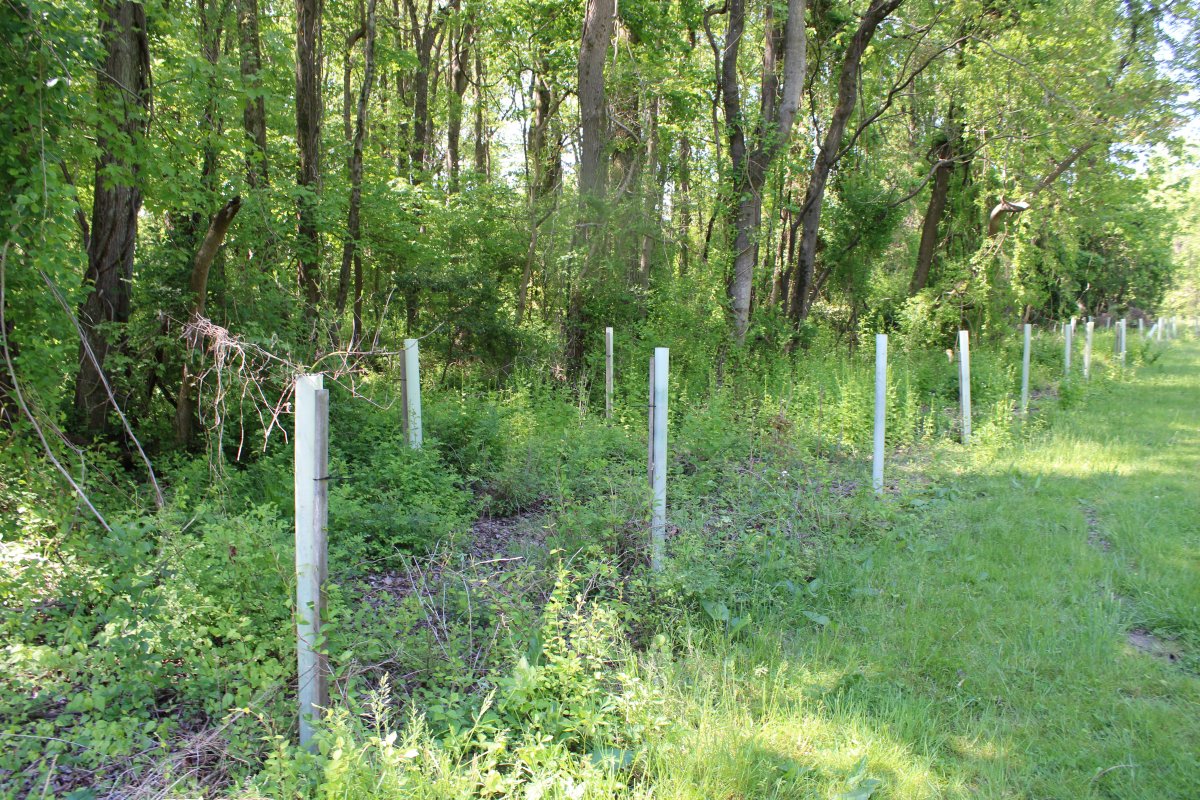 |
|
| The area opens up to the south. |
| |
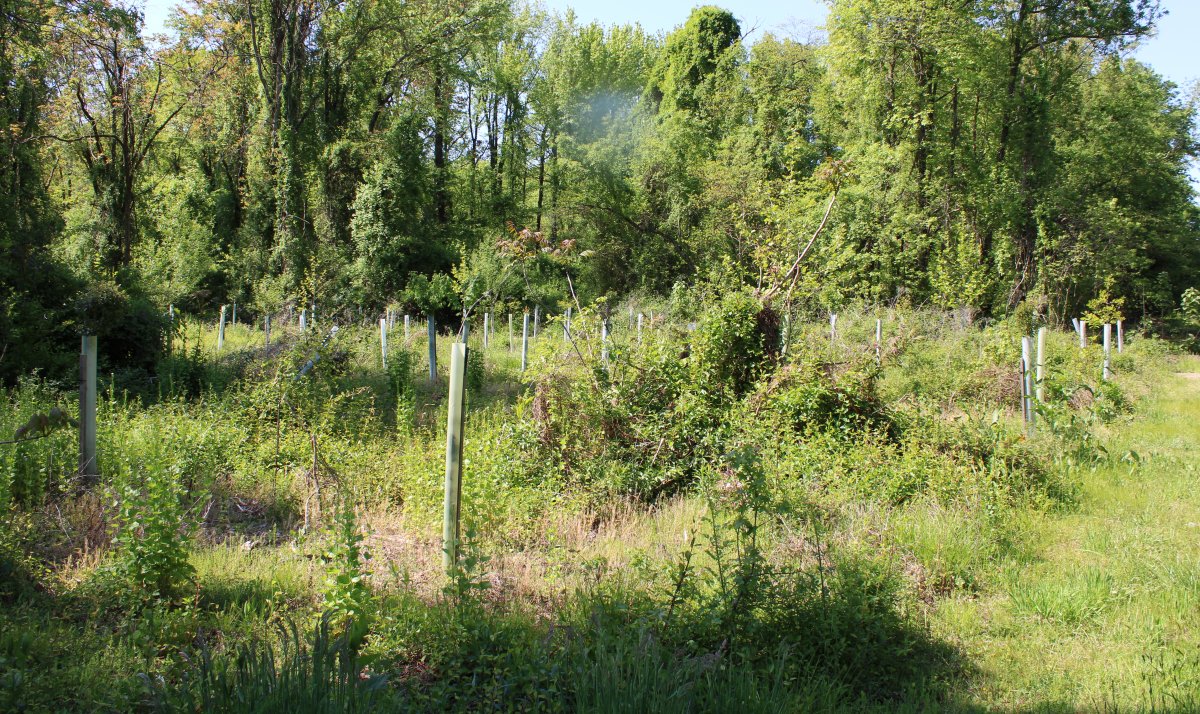 |
|
|
At center, another tree doing very well.
|
| |
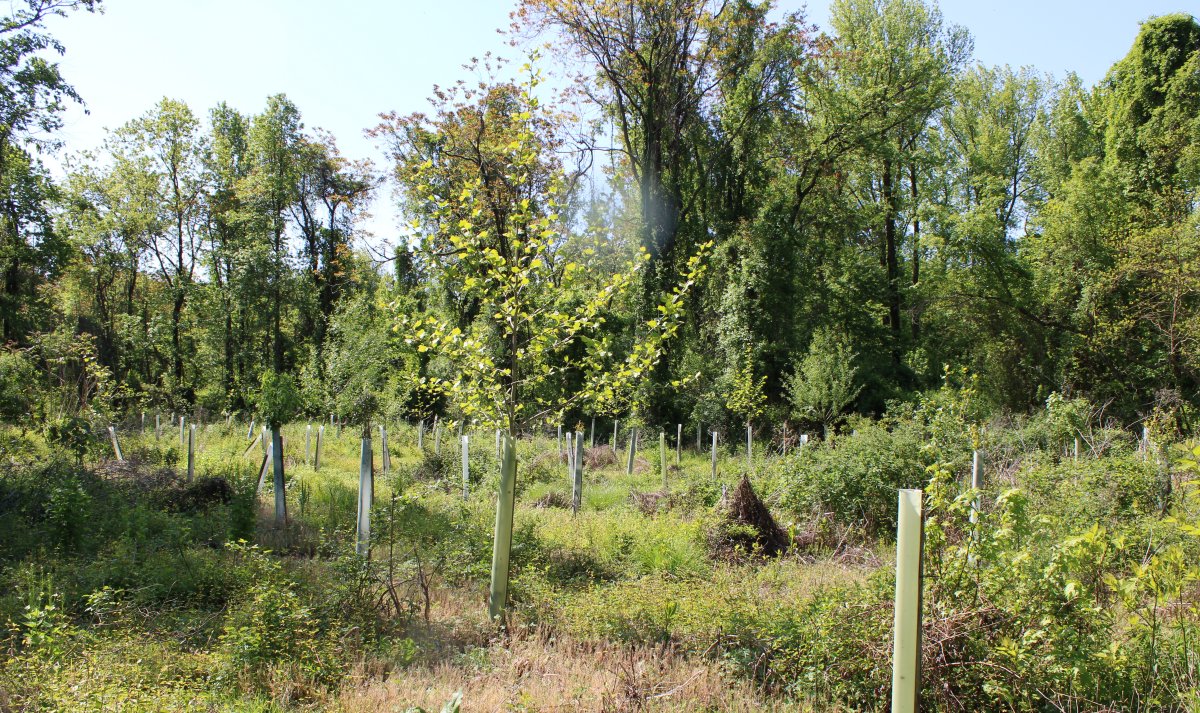 |
|
| Another tree flourishing left of center but the ones to the right, not so well. |
| |
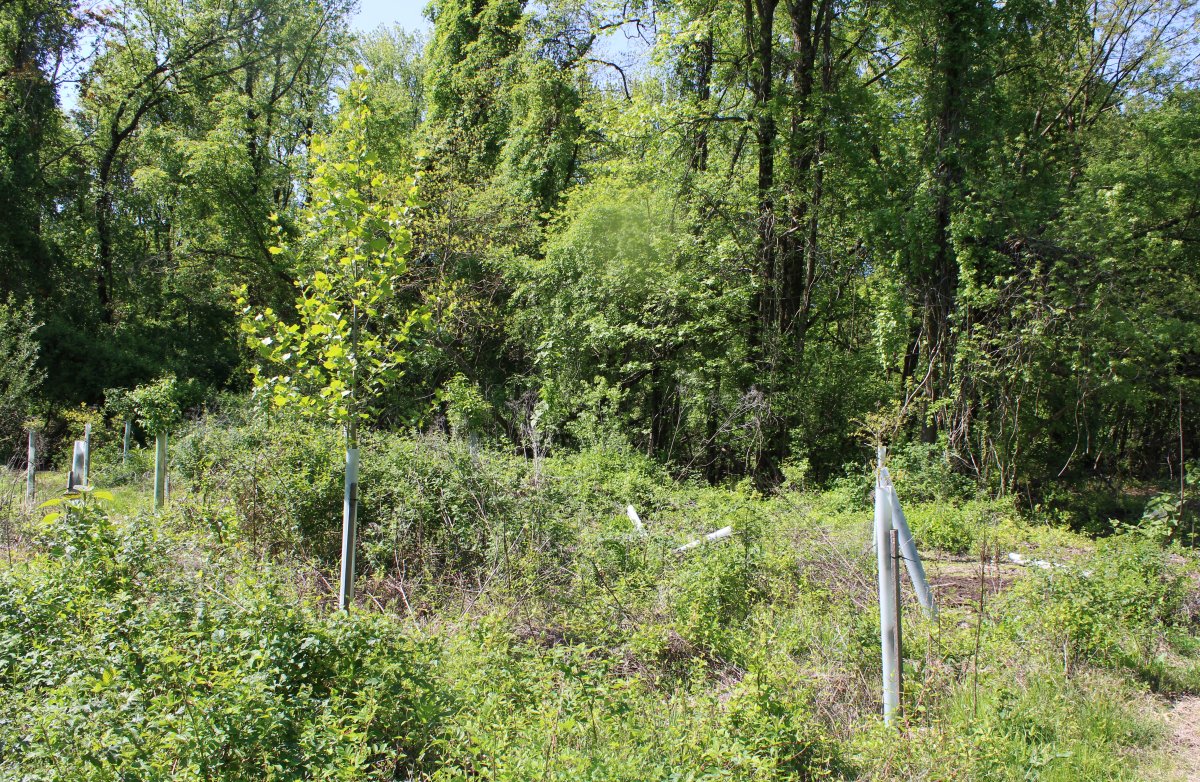 |
|
|
Looking south down Path P5 still in tree area T3.
|
| |
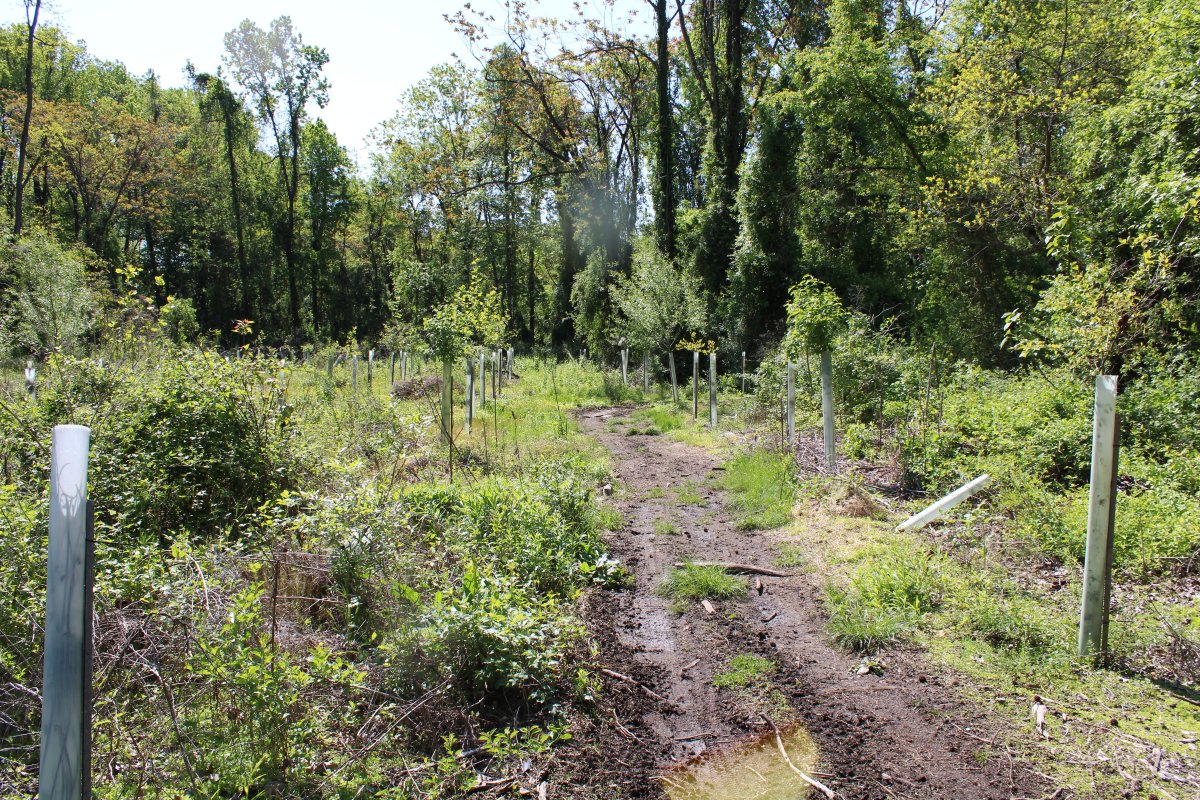 |
|
| Knocked over by ATV riders? Who knows. Regardless, this tree never took. |
| |
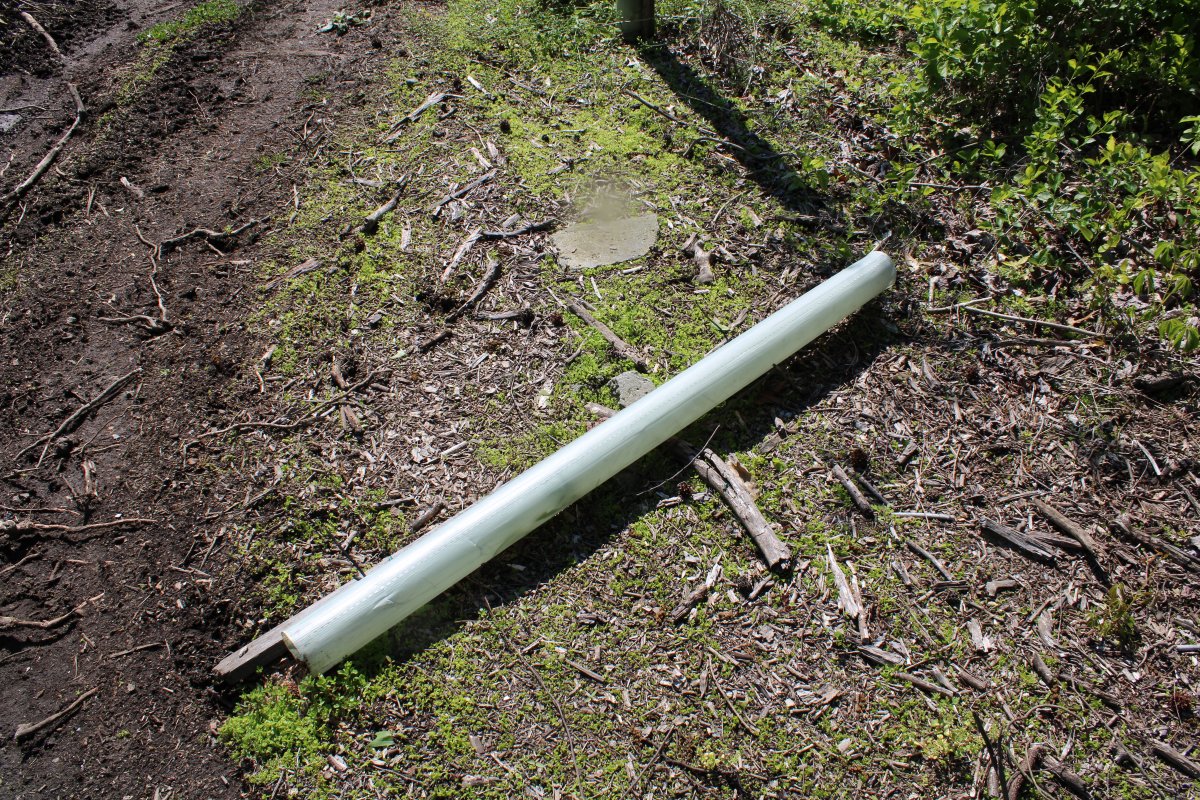 |
|
|
I did see a few cases -- less than five -- like this one where a live tree has been knocked over. Could this tree be saved?
I estimate 30% of the trees in area T3 were dead.
|
| |
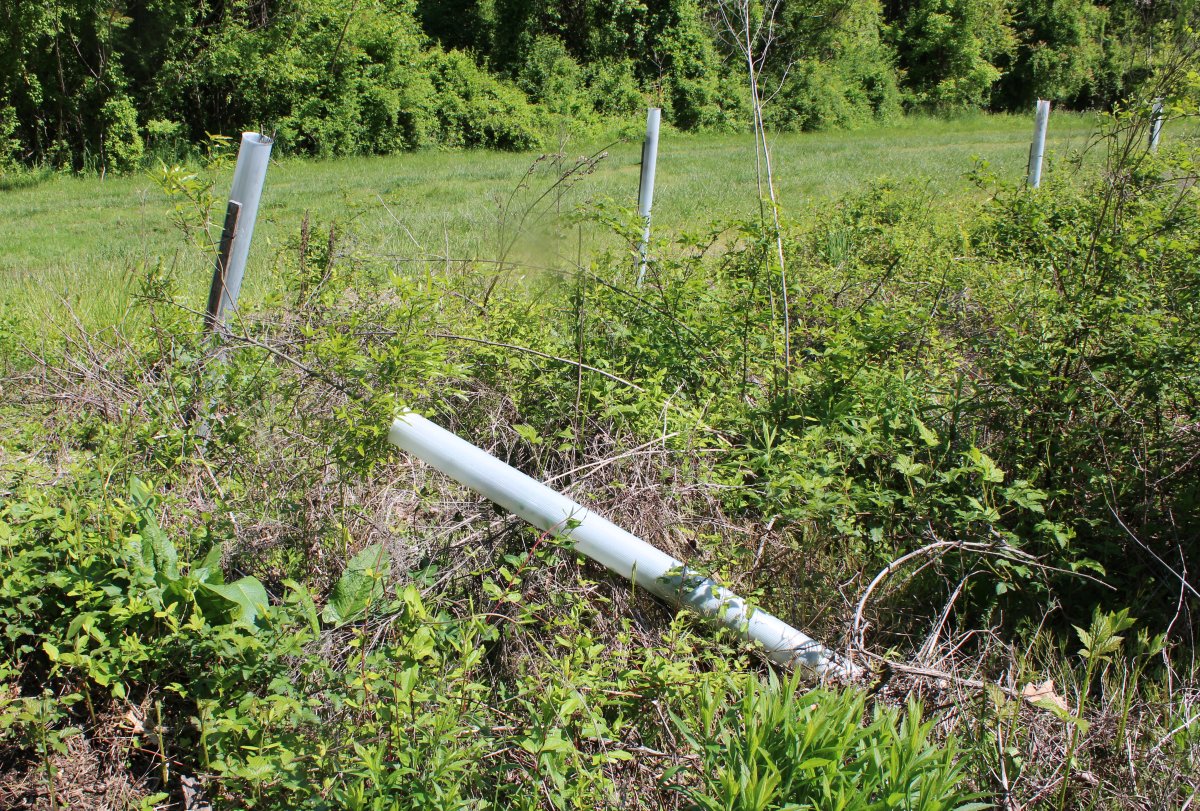 |
|
| Down near the beach on Back River, I turned north up Path P4. |
| |
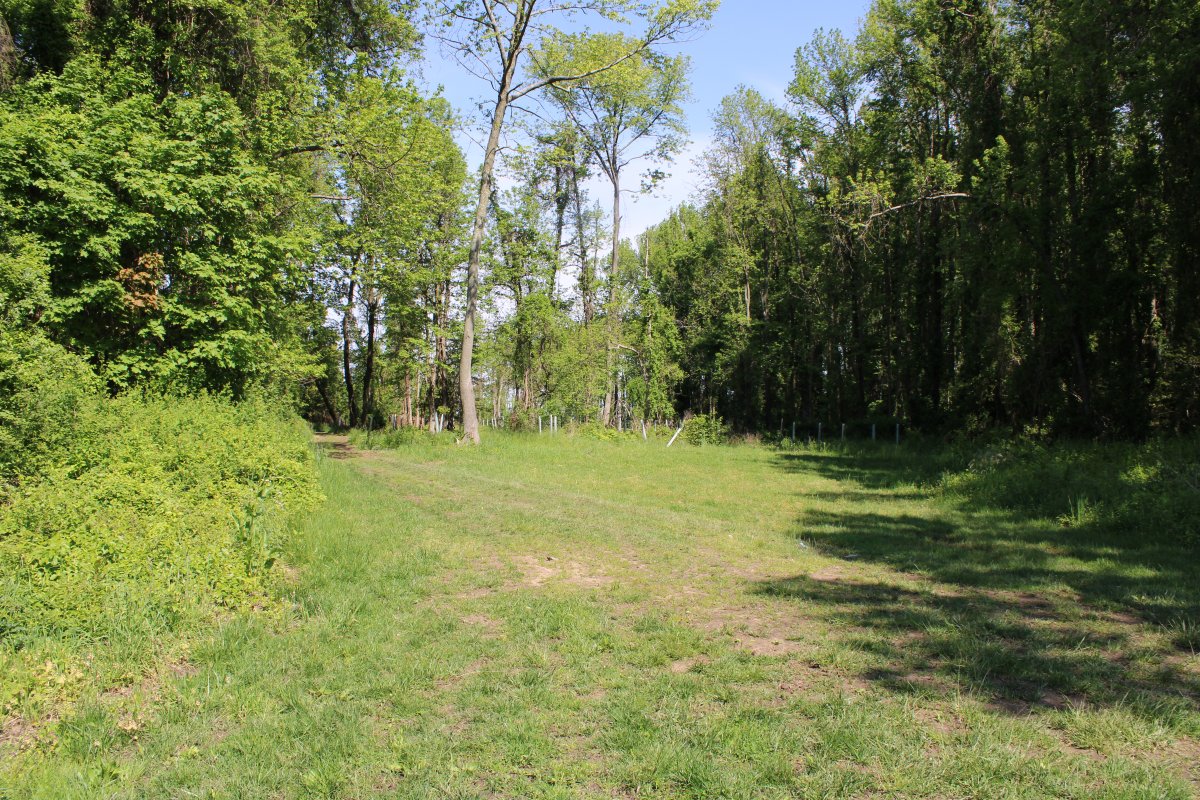 |
|
|
Soon I encountered tree area T4.
That tree just off the path is doing pretty well although it is not growing straight. Maybe replace the wood support with a steel one since it is so close to the path. Two tubes are laying on the ground, with no trees in them. What happened here? When did it happen?
|
| |
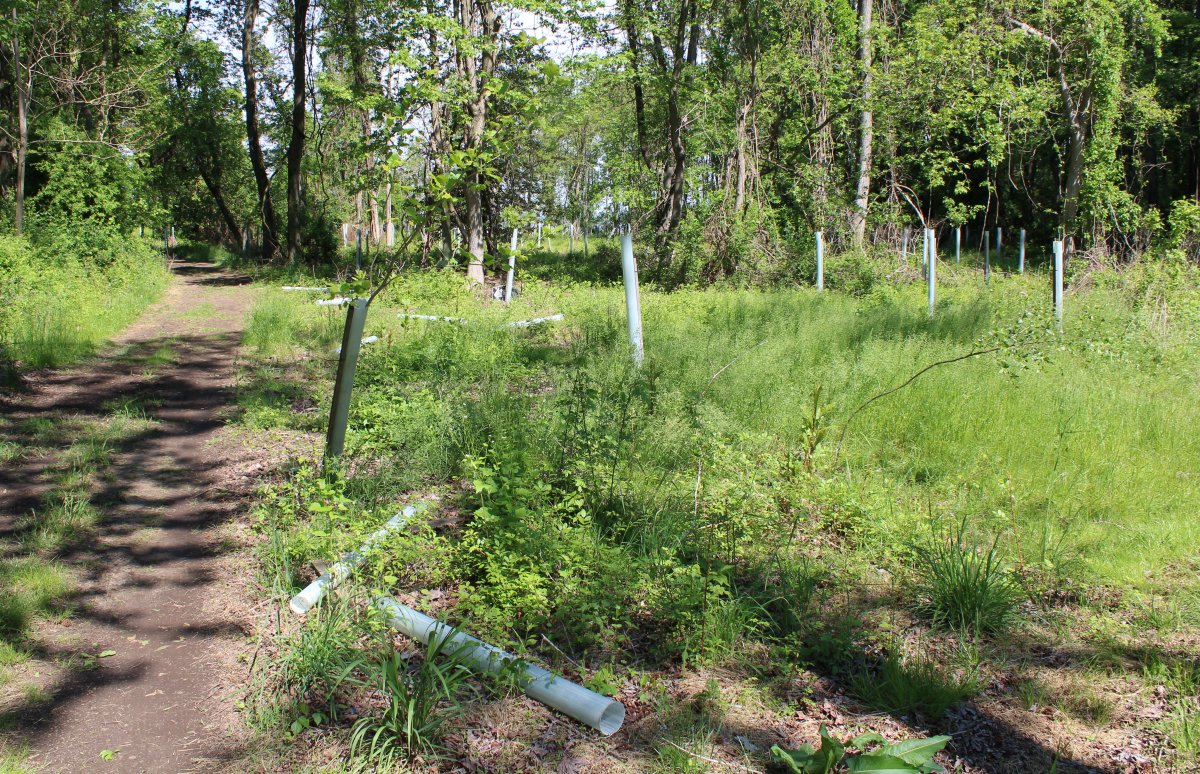 |
|
| Again, what happened here? When did it happen? Since neglect and dilapidation breeds vandalism, maybe these downed tubes should be picked up. If these were due to vandalism, removing them might reduce further vandalism. |
| |
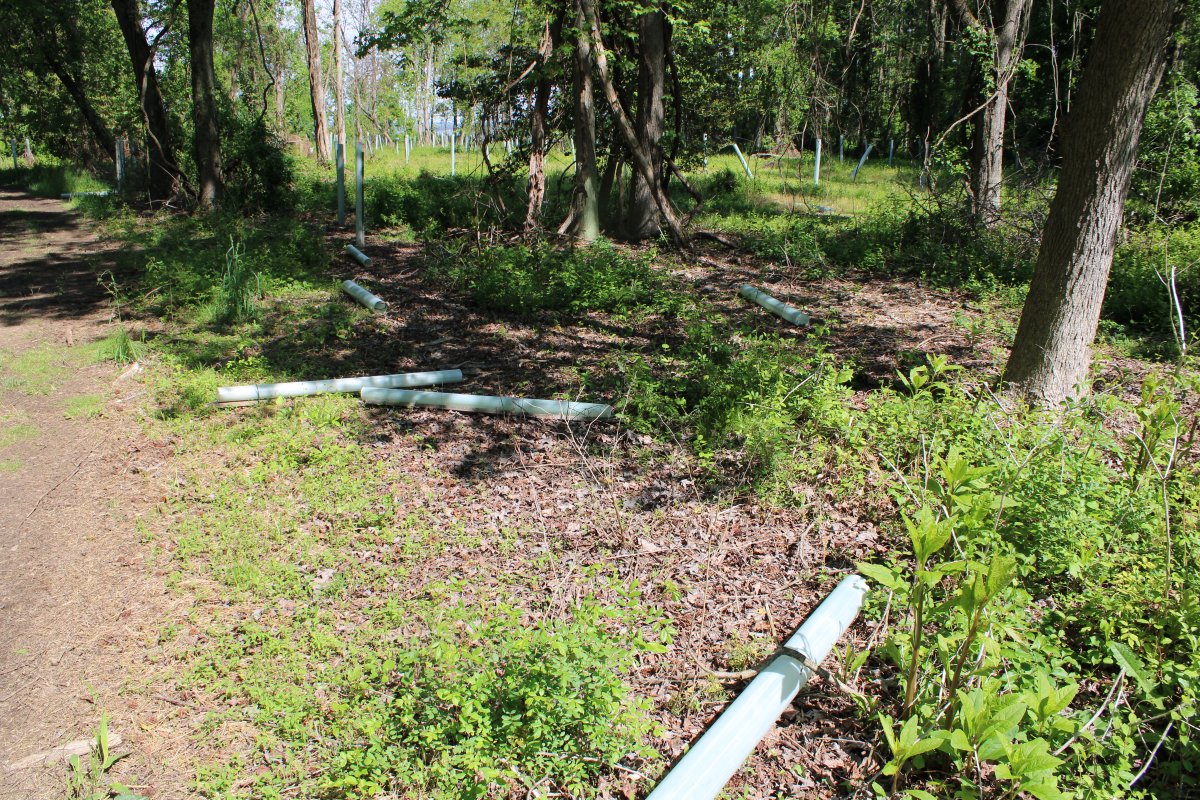 |
|
|
A downed tube with a dead tree in it.
|
| |
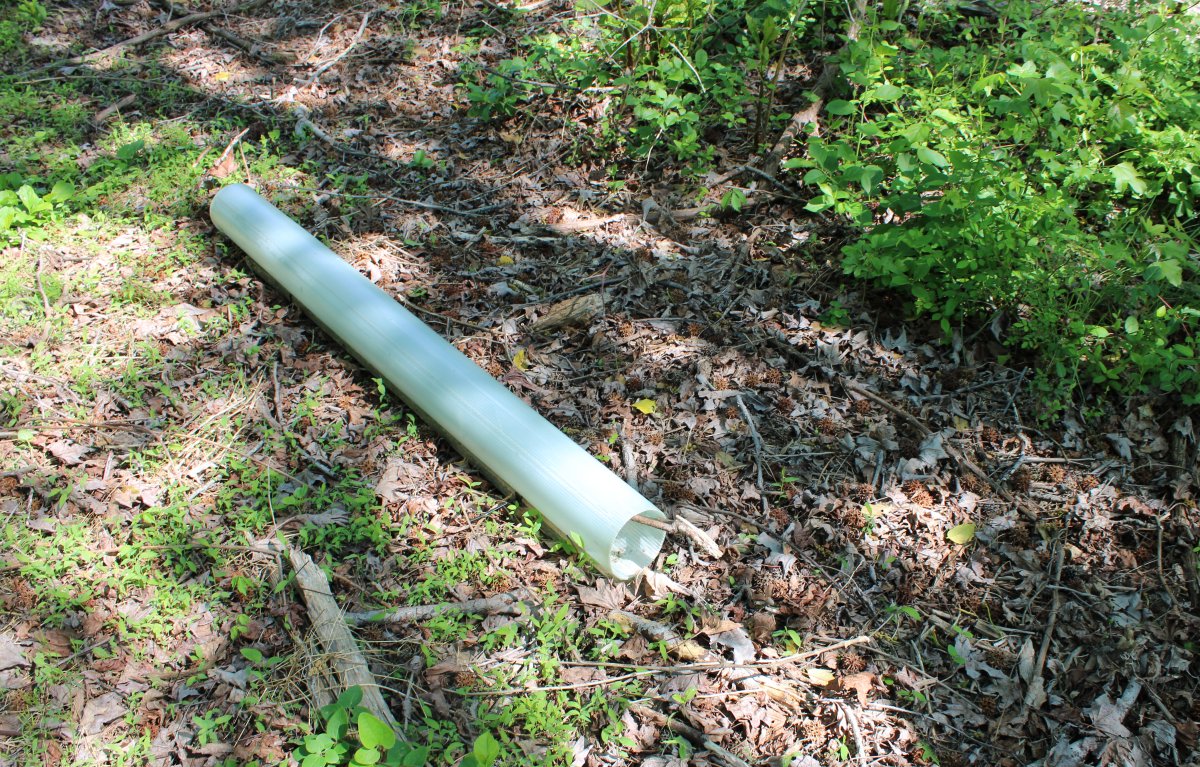 |
|
| A tree in good shape on the right but most of the tubes in his shot contain dead trees. |
| |
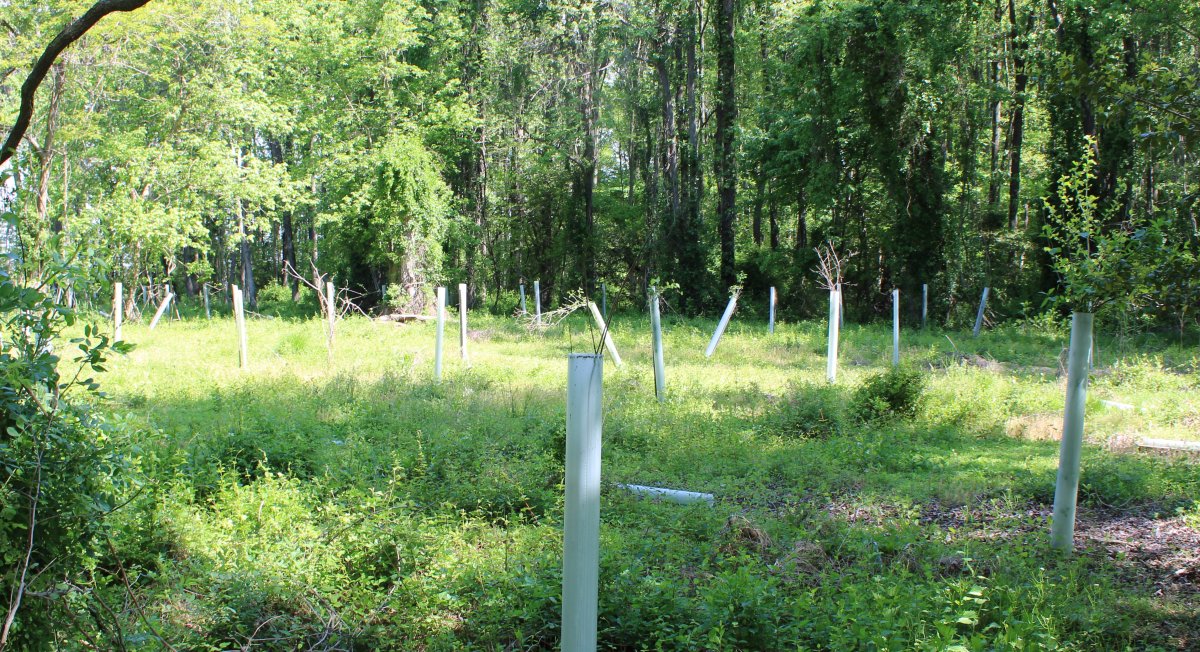 |
|
| A few live trees but mostly dead. |
| |
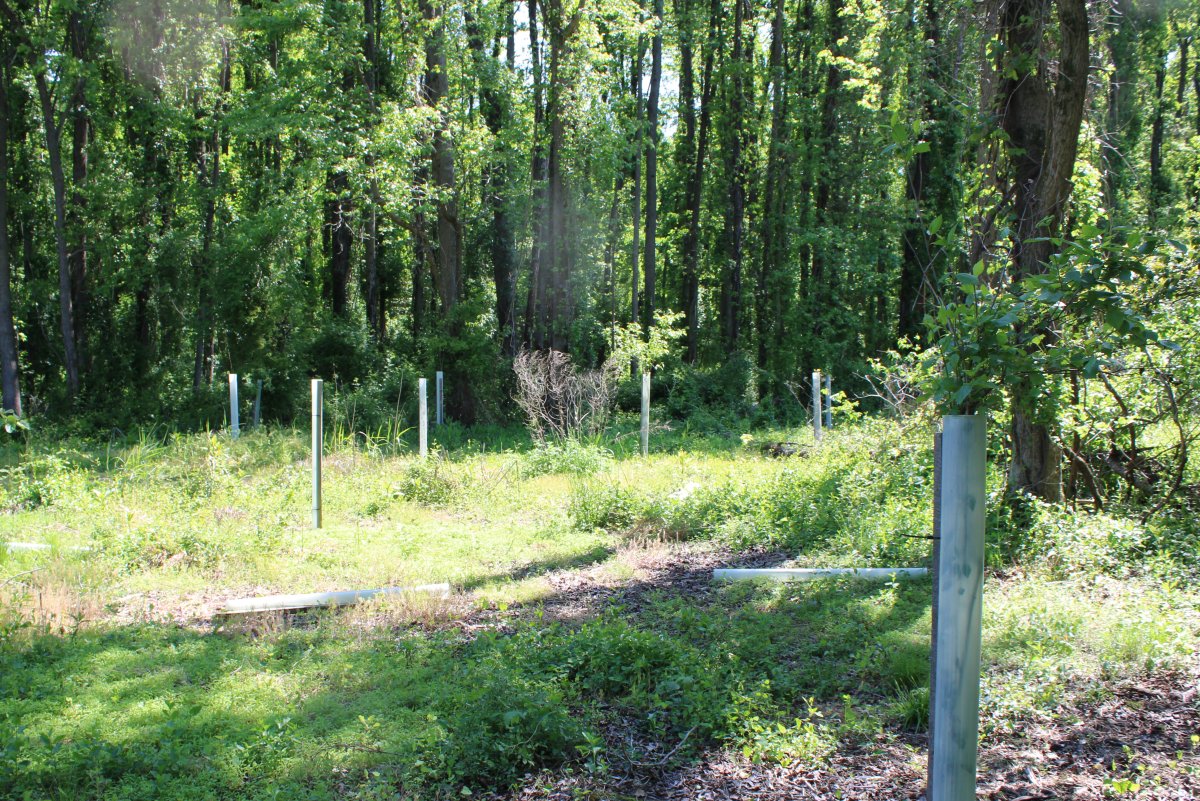 |
|
| An empty tube stands sentinal. |
| |
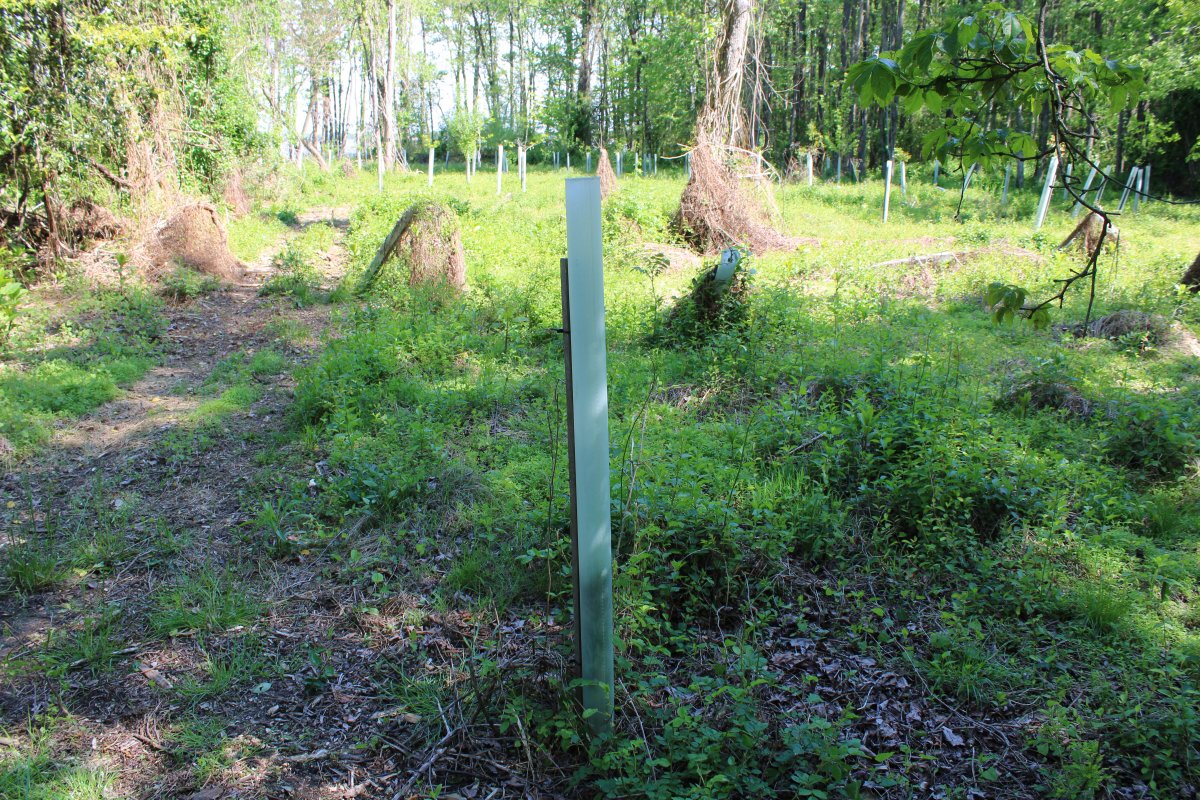 |
|
|
No live trees in this shot.
|
| |
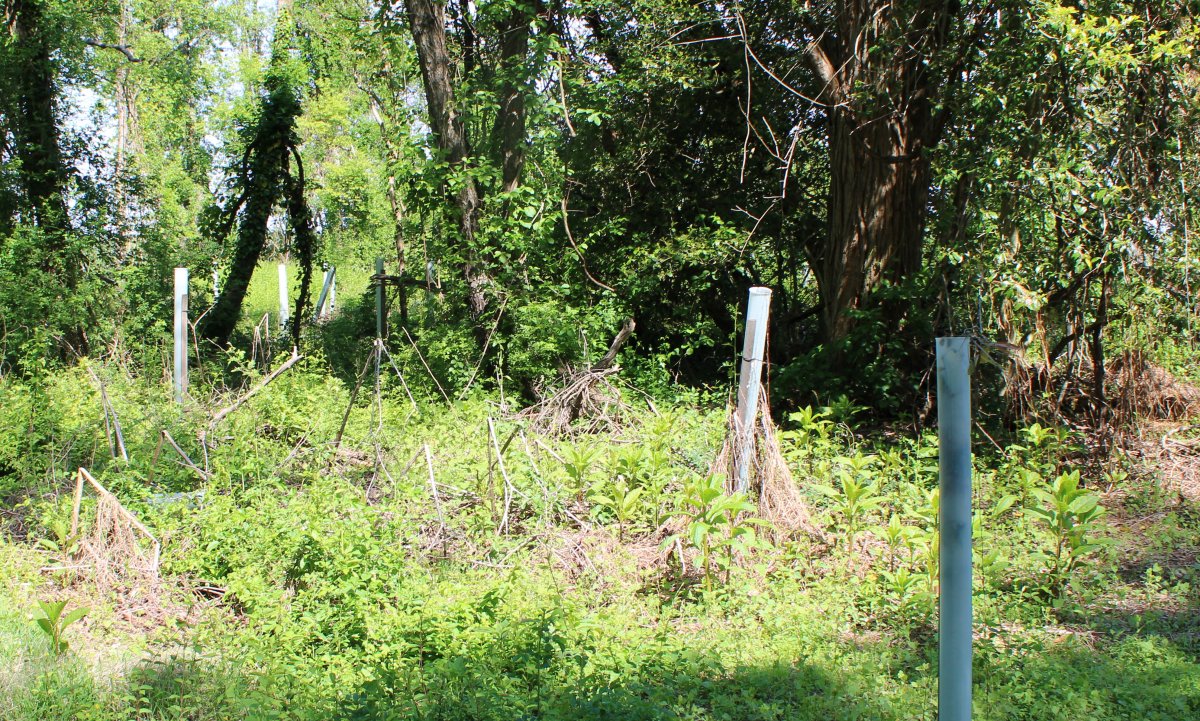 |
|
| The picture speaks for itself. |
| |
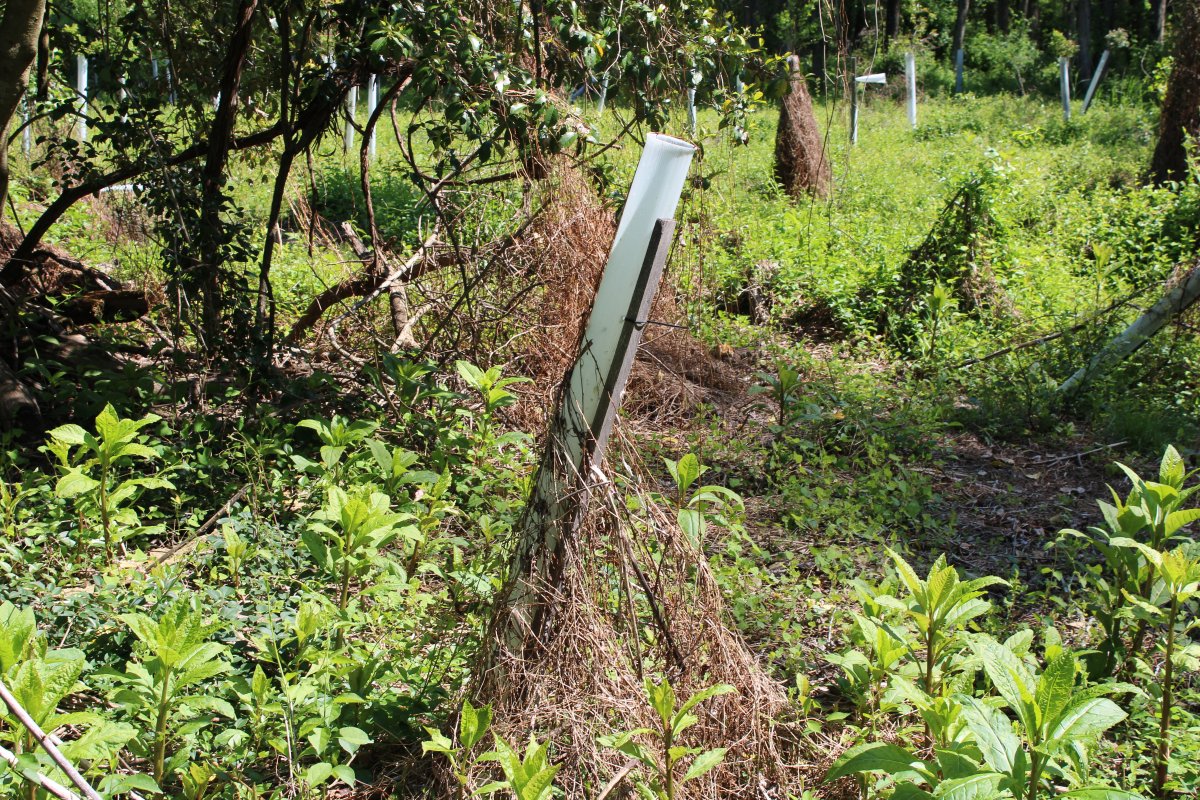 |
|
|
Three very healthy trees in this shot.
|
| |
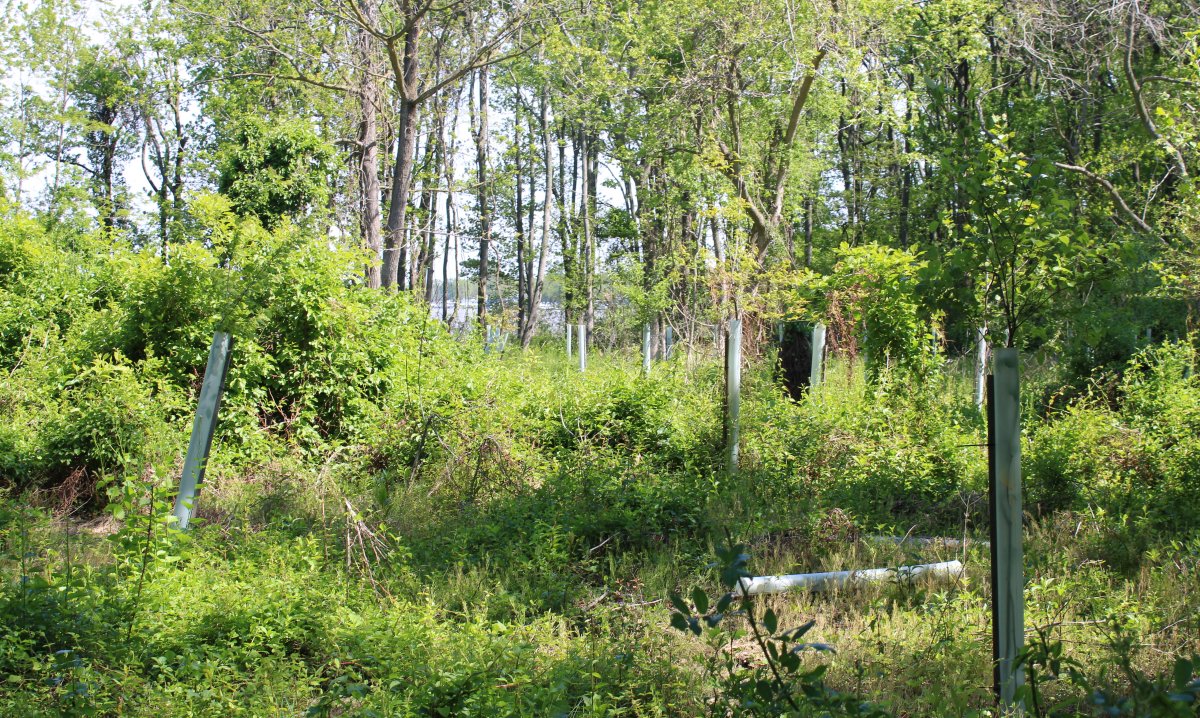 |
|
| We really should pick up the downed tubes. How long have they been there? |
| |
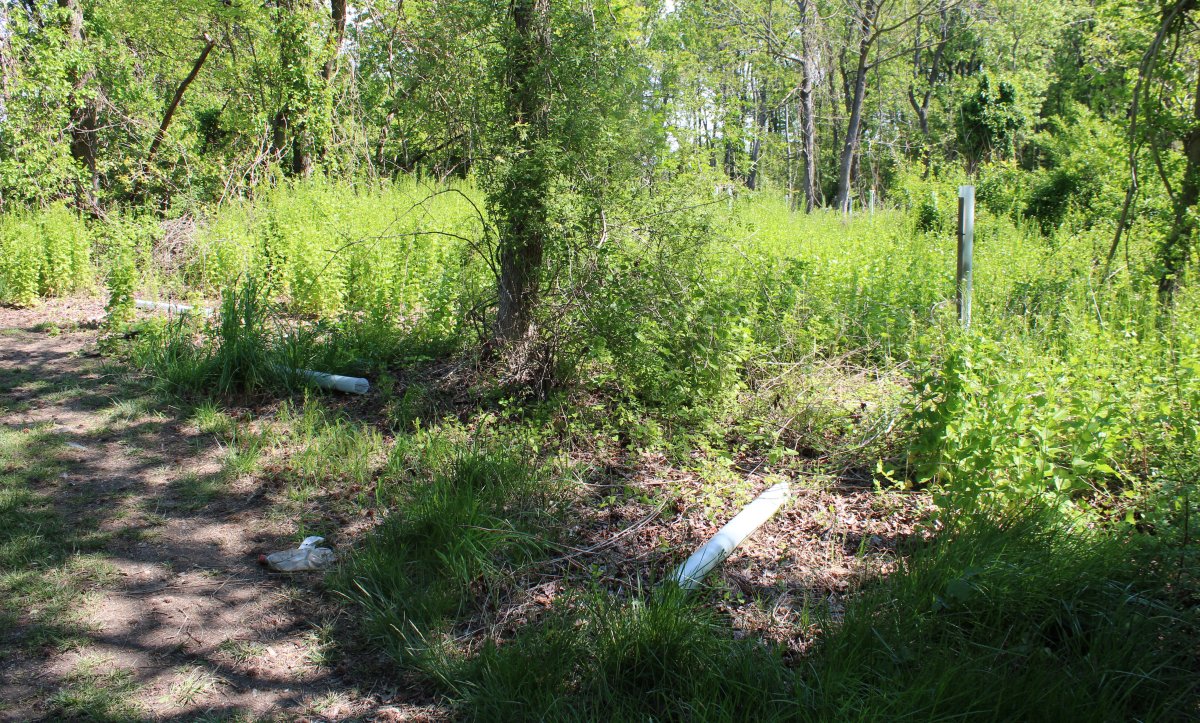 |
|
| A tree doing great just right of center. But it is surrounded by mostly dead trees. |
| |
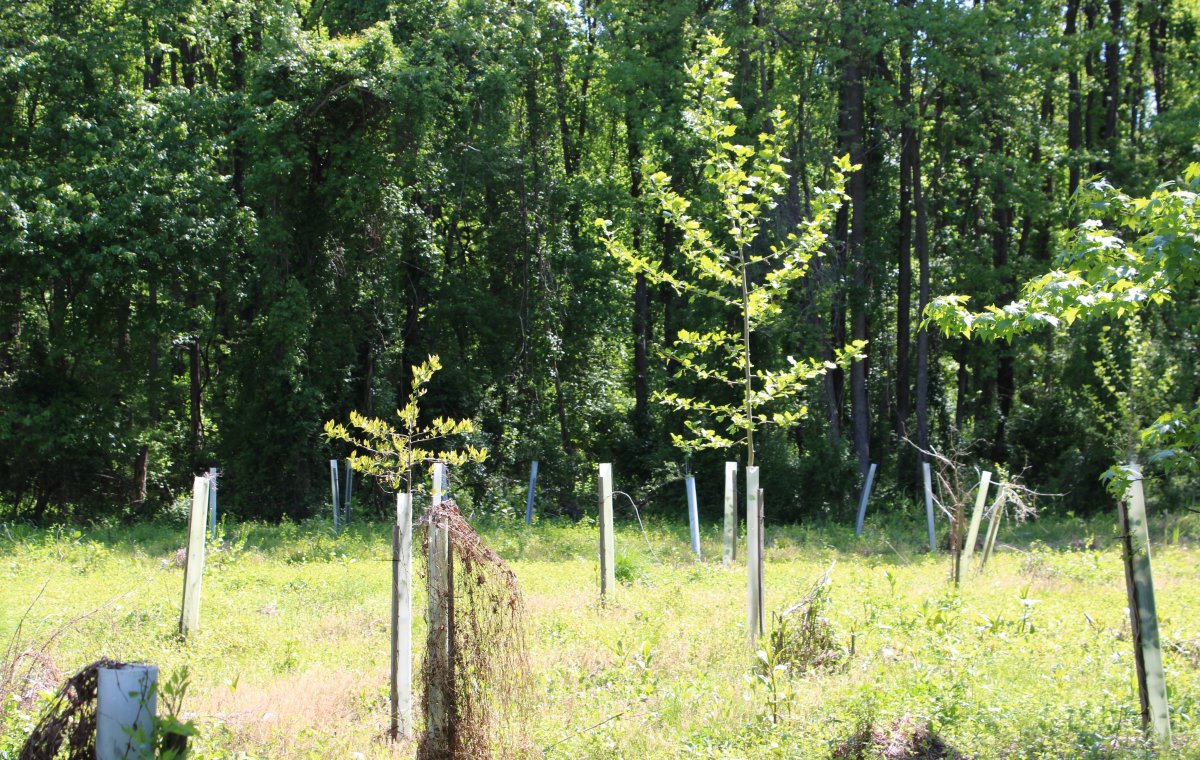 |
|
|
I estimate that 70% of the trees in area T4 are dead. This was by far the worst area of the four with respect to dead trees.
|
| |
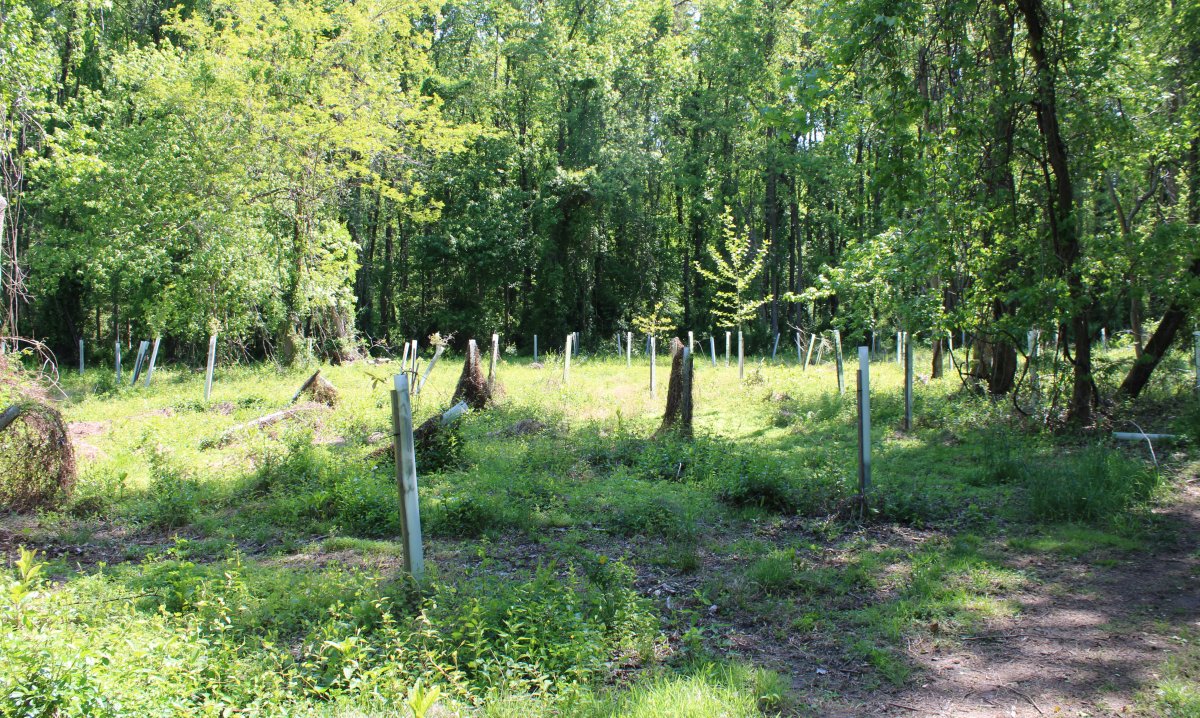 |
|
| |
| |
|
|
|
|
|
|









































